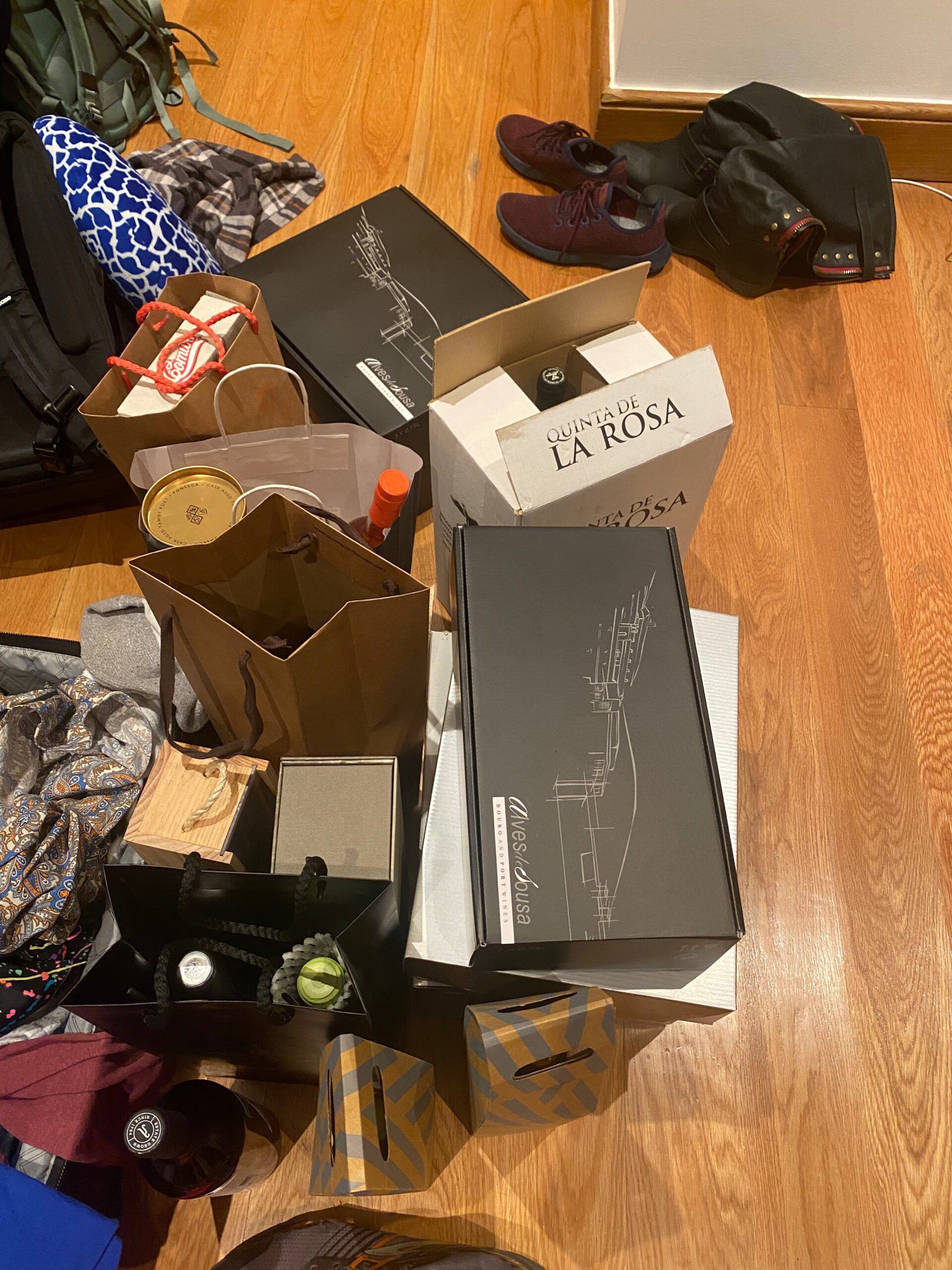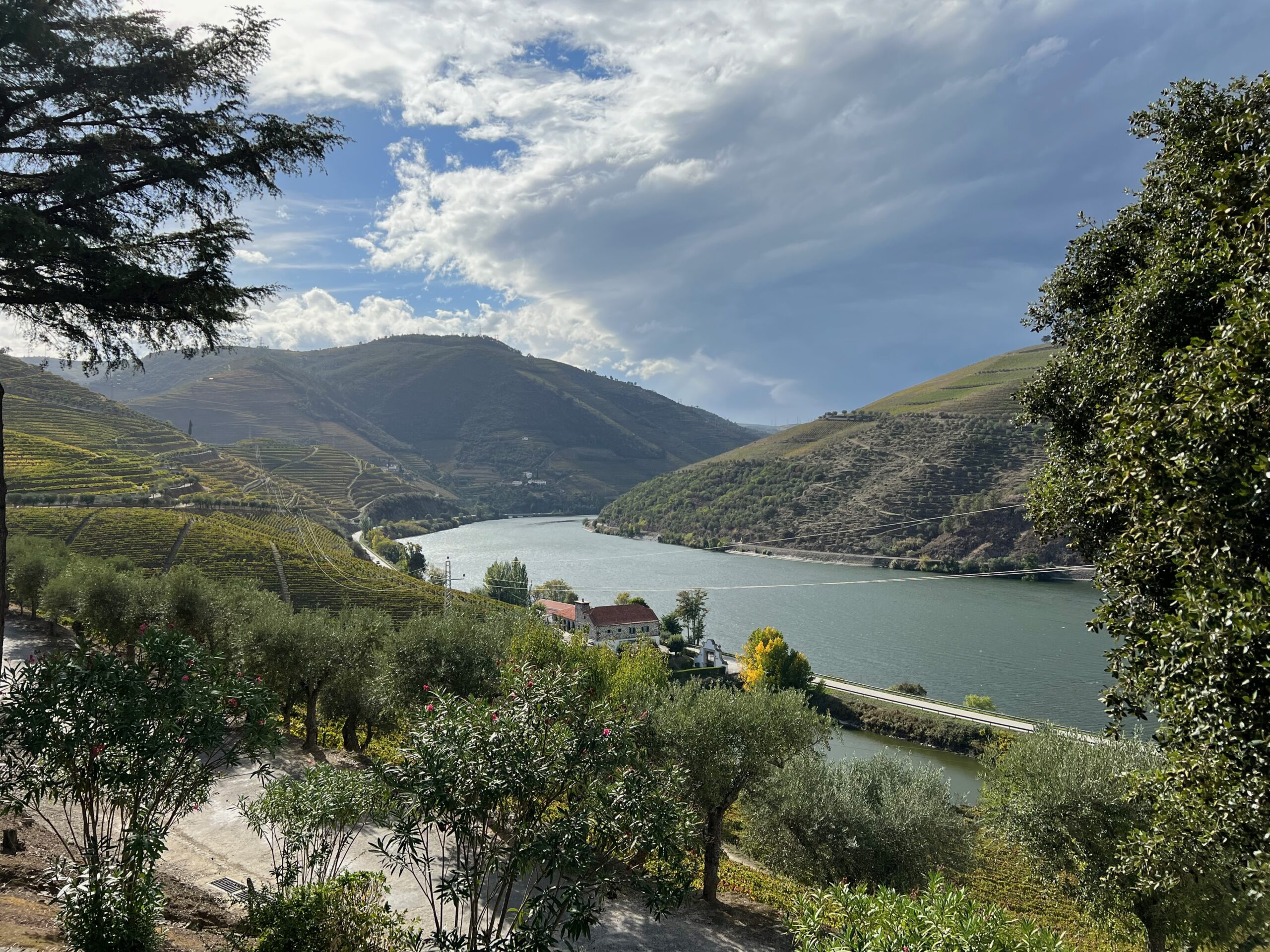
For our two days in the Douro Valley, I had organized a private wine tasting tour for the first day and a group tour for the second day – both of which would pick us up from our hotel which was located in Regua – one of the larger cities in the valley.

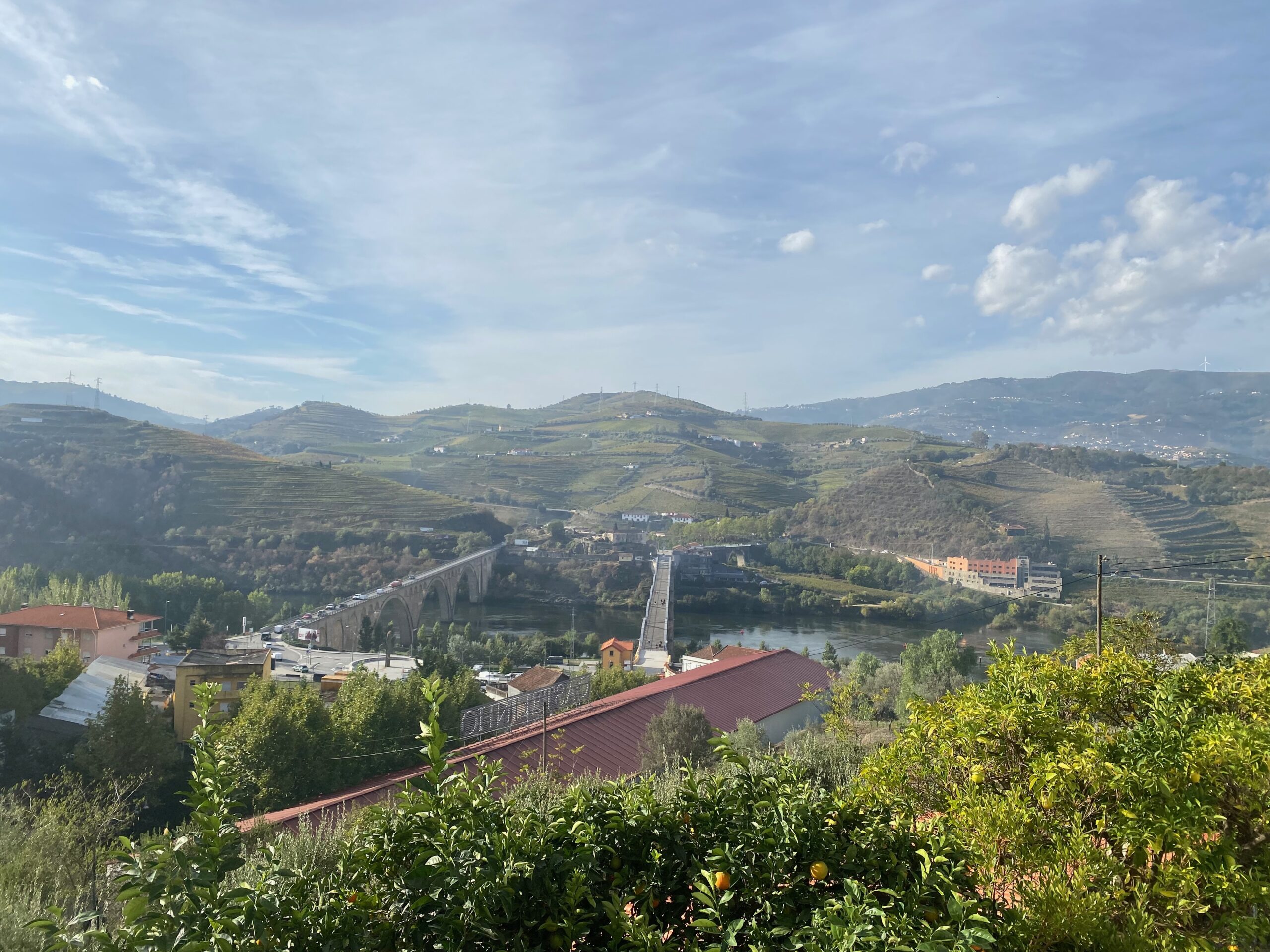
The Douro Valley is absolutely stunning and we were amazingly lucky to have a beautiful sunny and warm day for our first day out. With Francisco, our wonderful guide, we headed away from the city and into the heart of the valley for 45 minutes of incredible views as we followed the river. Almost every surface in the valley is terraced – there are hand-made terraces from the Roman times (i.e. 2300-1900 years ago), through to modern day terraces that are made by machines. We learned that the harvest in this area is still entirely manual, even today, due to the fact that the terraces with the vines are too small for any machinery to do any of the work.
In order to be officially classified as a Port, the grapes must be grown in this region only, the wine must also be made here in the valley, and then it must be aged/stored in Porto/Gaia. Though the region is famous for Port (thanks England!), there are over 250 different kinds of grapes grown here, and lots of “dry table wines” (their way of saying normal wine that is not sweet/fortified Port), both whites and reds are made here too.
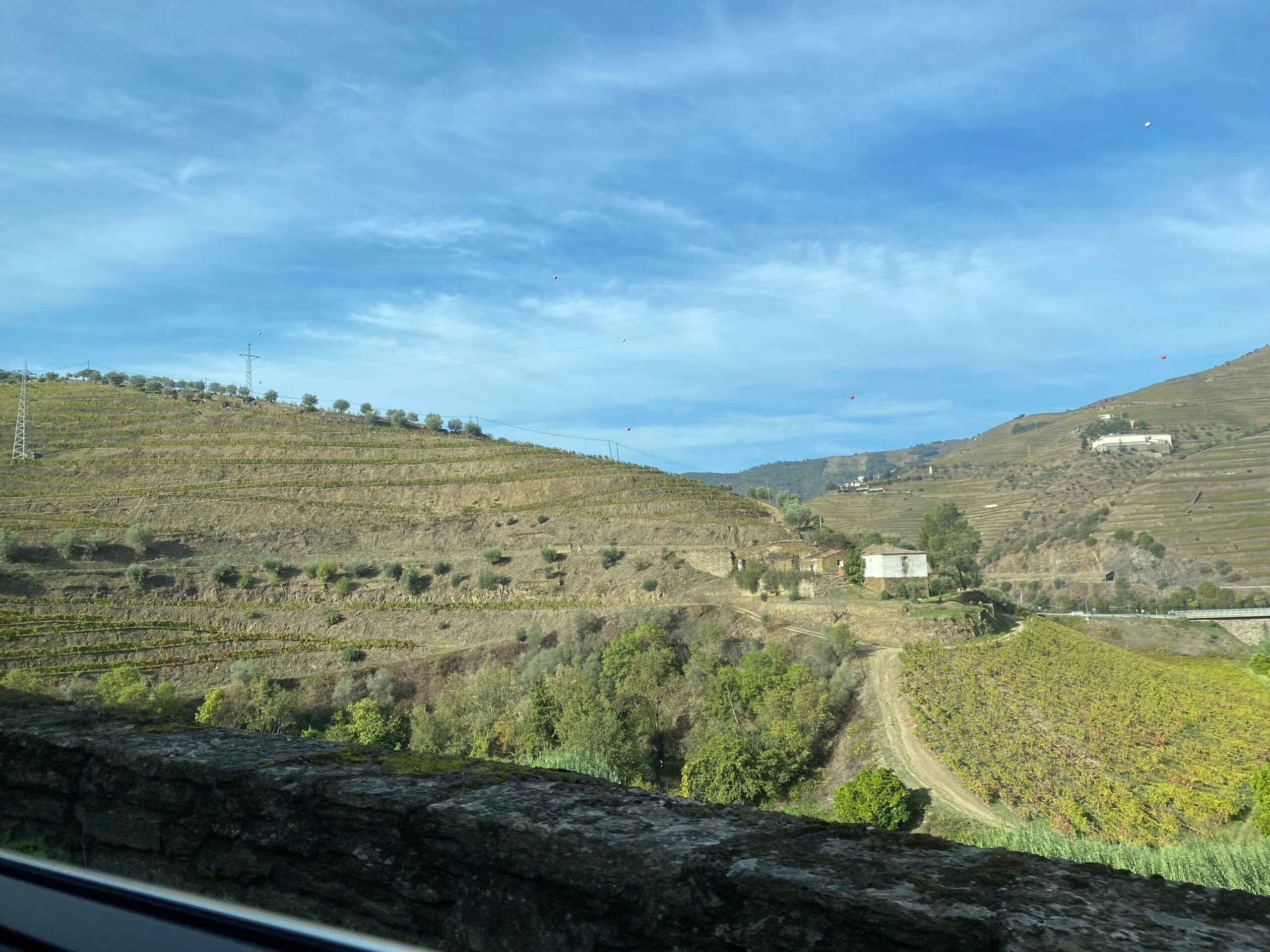
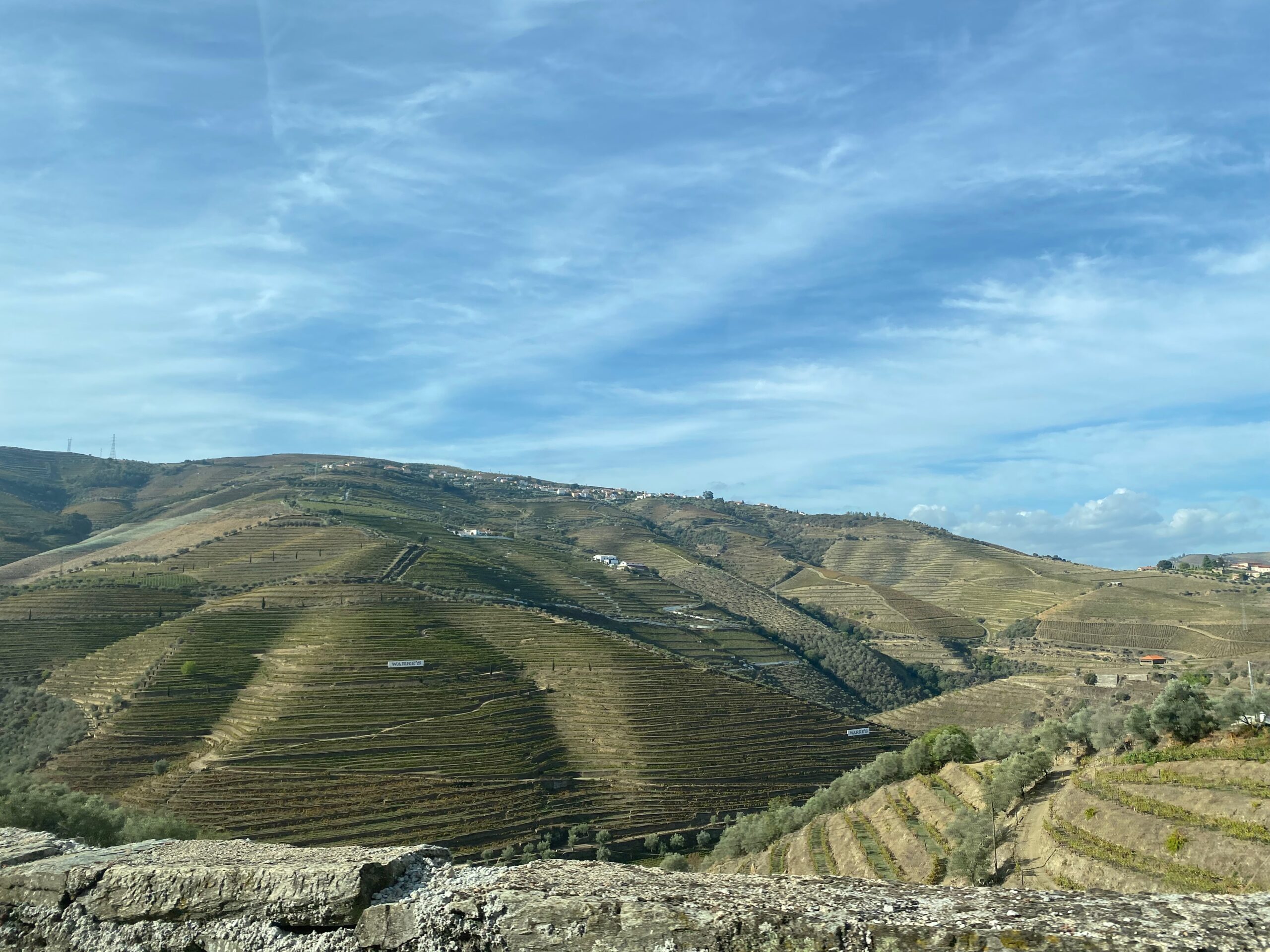
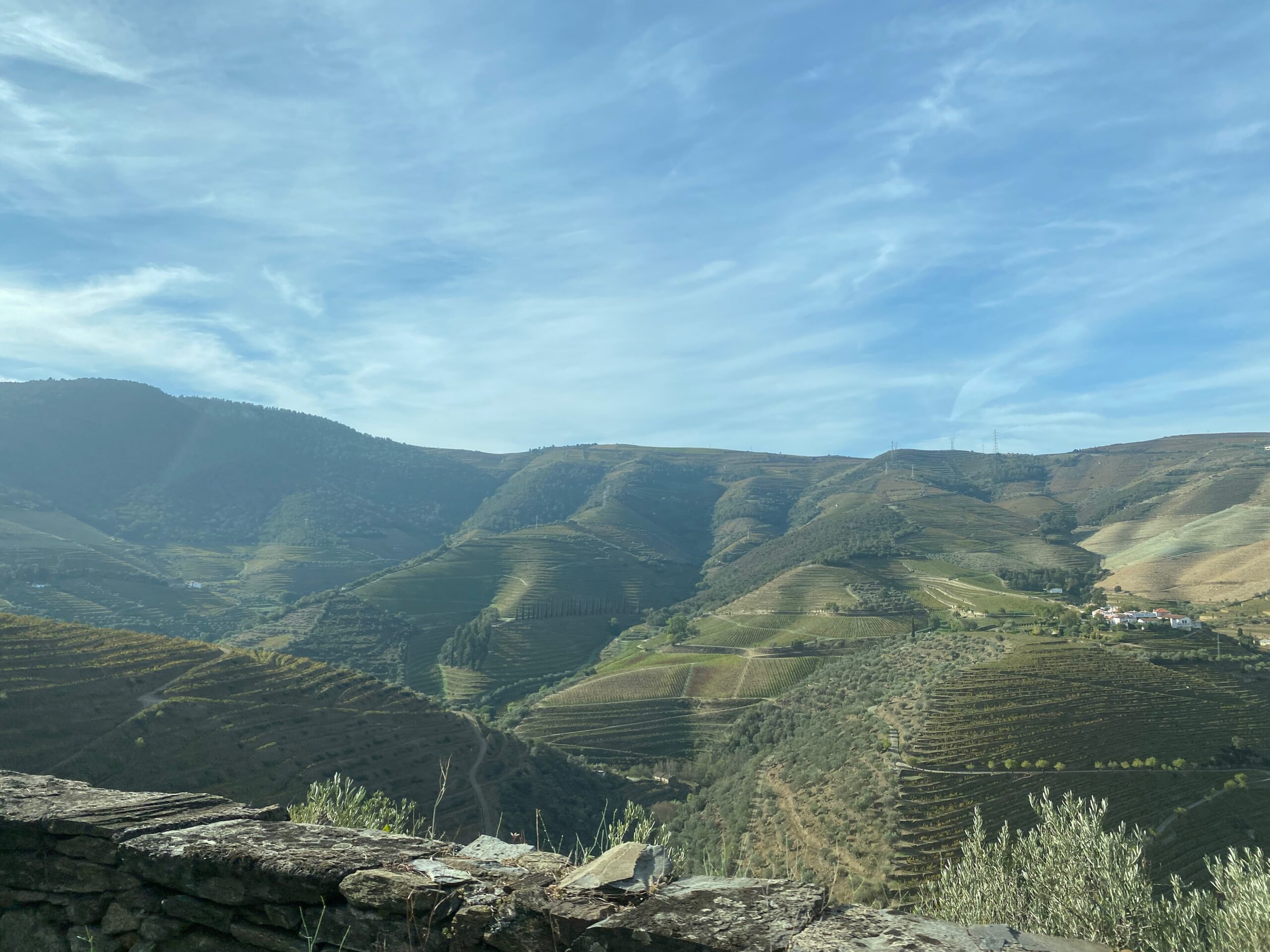
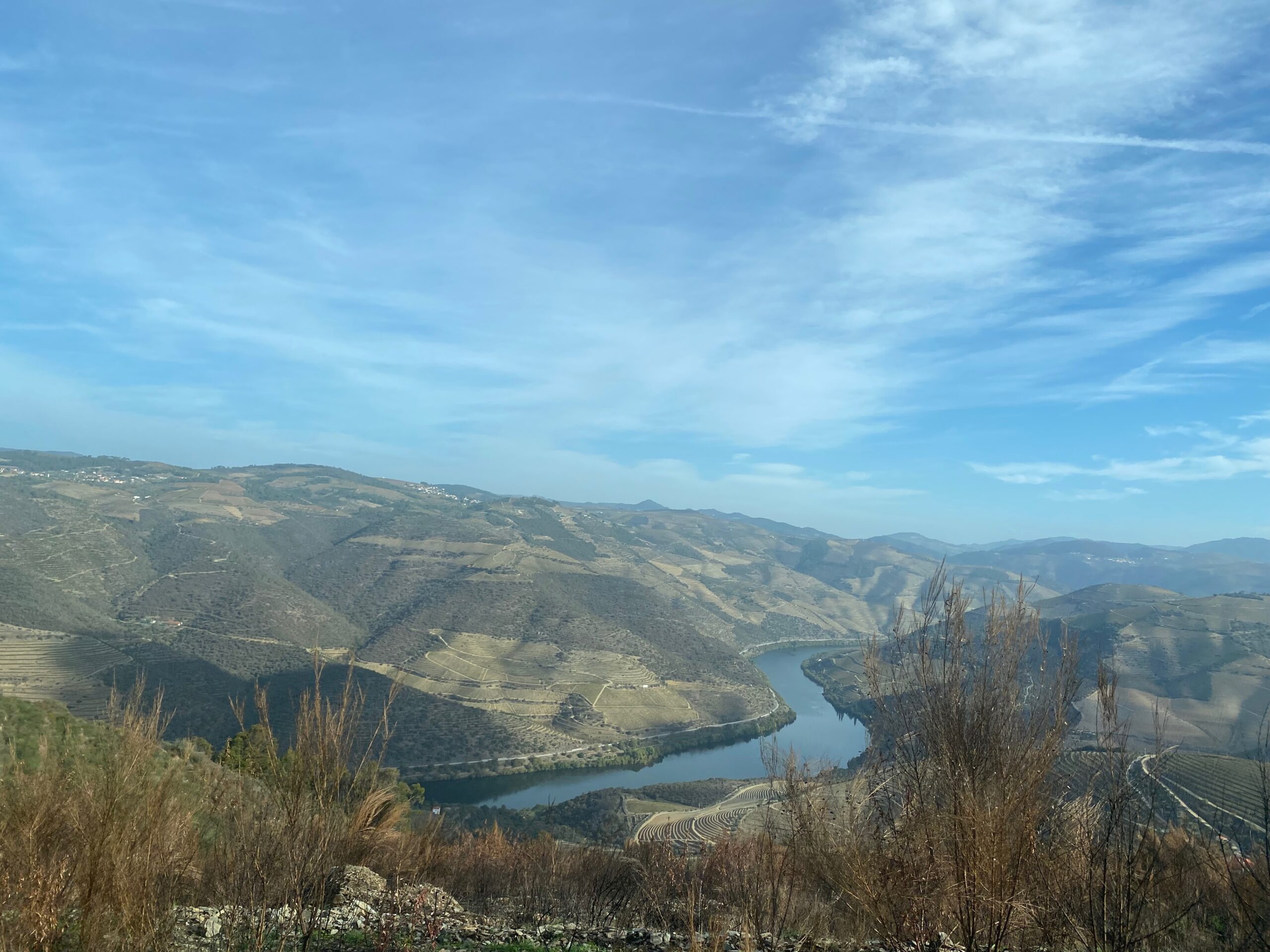
Everything in the region seems to be divided into different estates or “Quintas” some of which produce wine under their own label, but more and more of these Quintas are being purchased by a parent brand (often foreign). The first that we visited was Quinta da Gricha, which is owned by a British family that has been making wine in the region for hundreds of years. Their label was “Churchills”. We were given a tour of the estate where we saw the granite Lagare where they still manually smash the wine (with feet). They had only just finished this process when we visited, so they were still stained purple from the grapes!
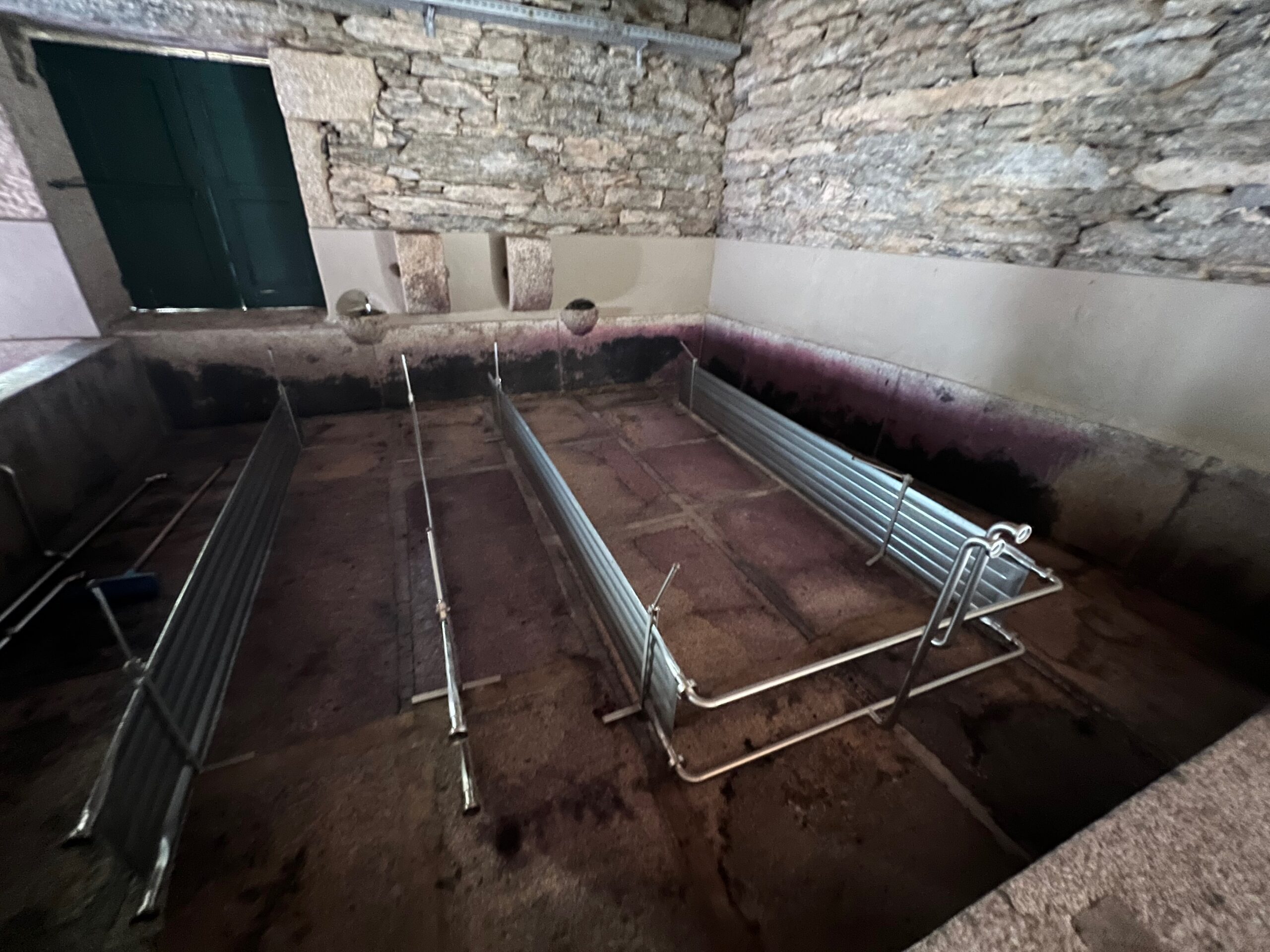
After the tour, we tasted their wines (table wines and ports) on a porch overlooking their estate.
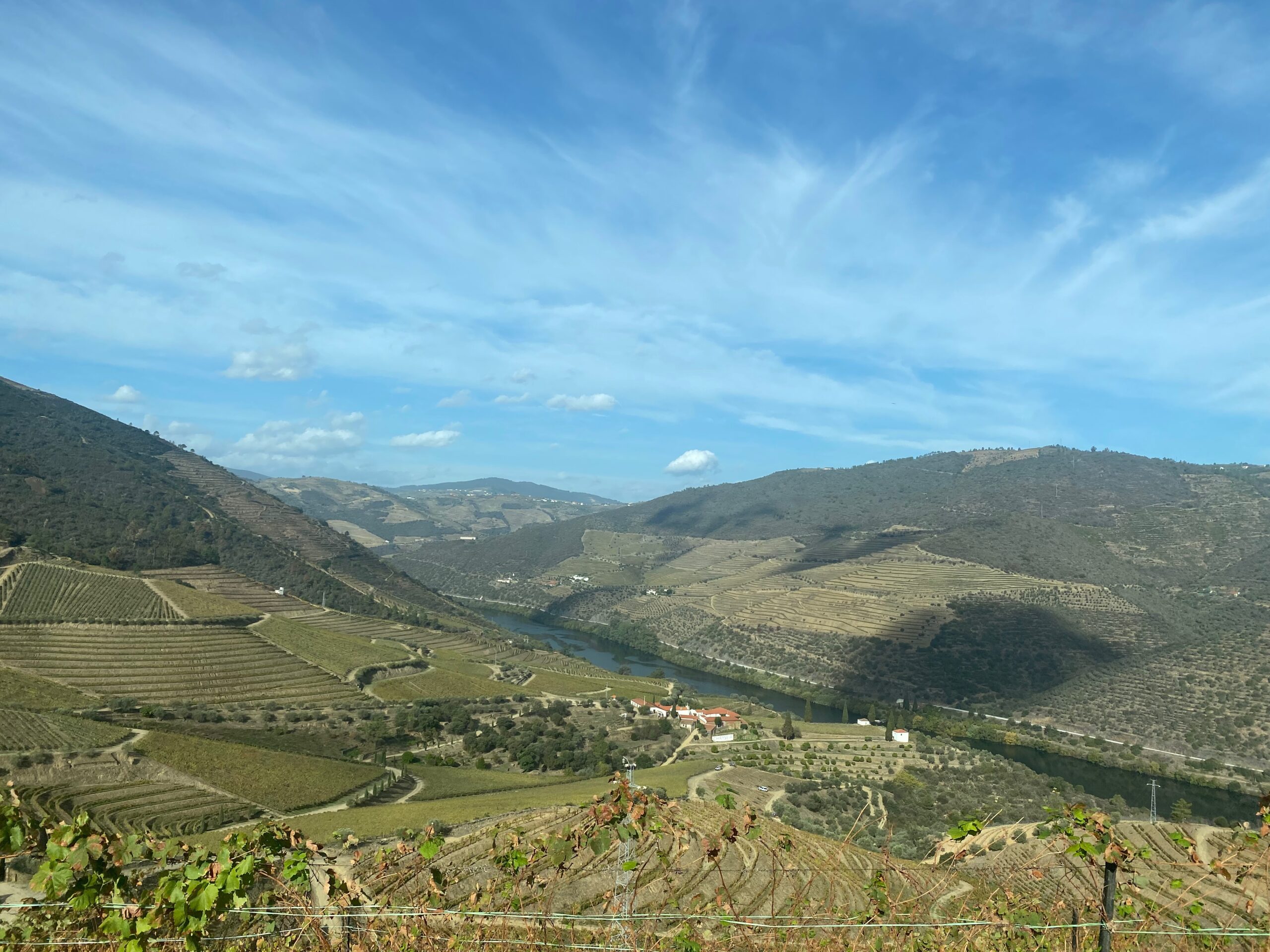
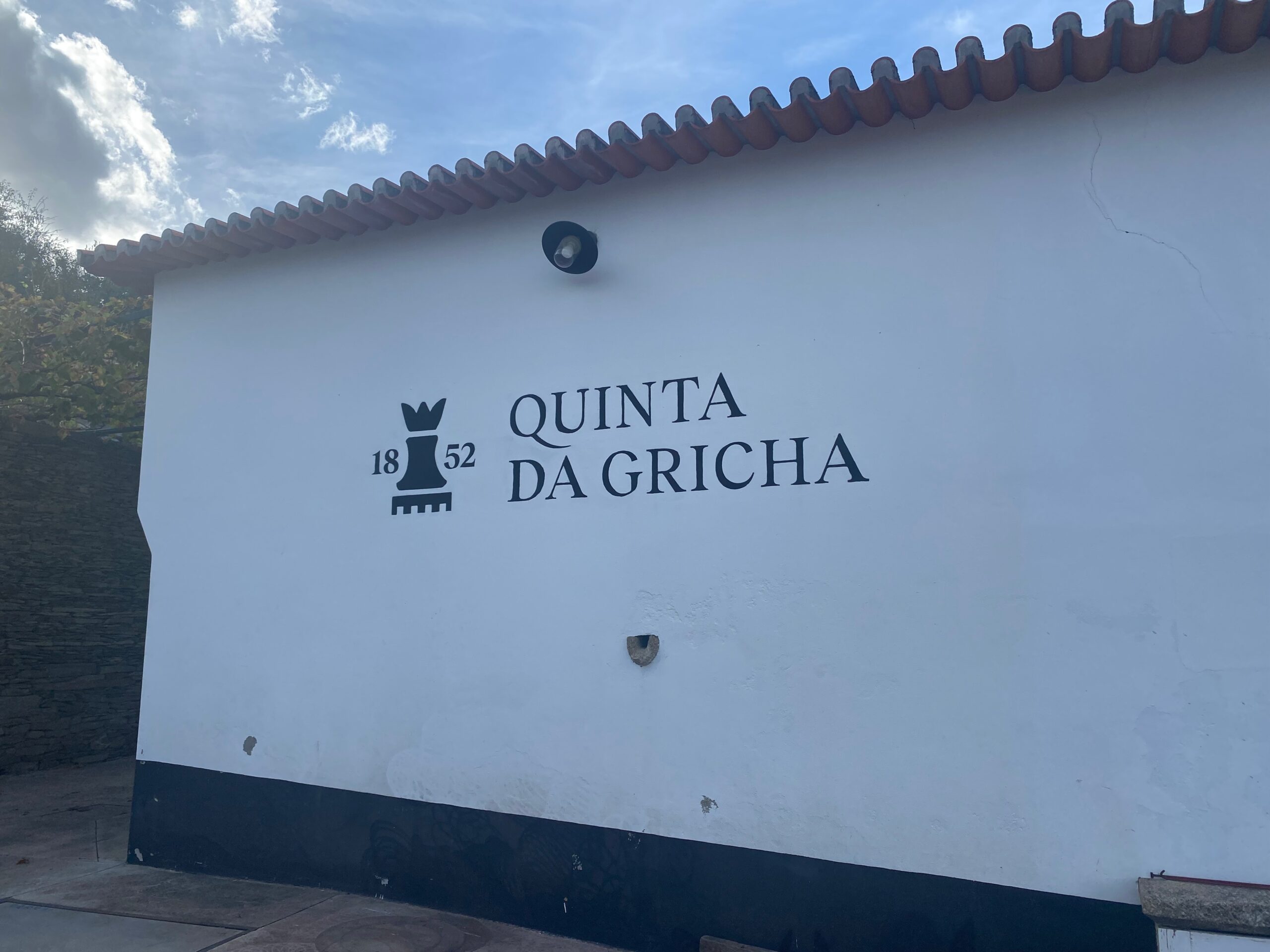
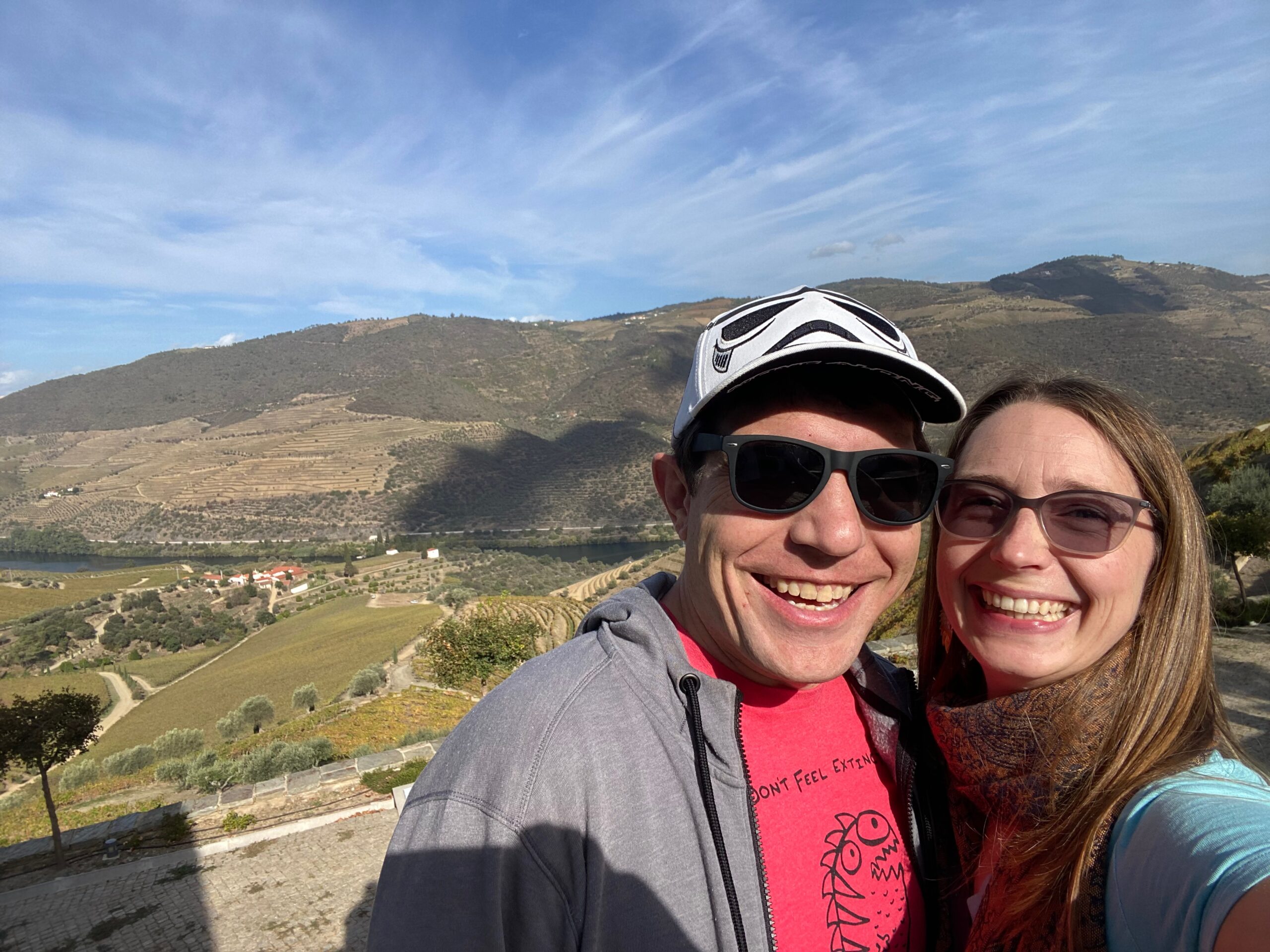
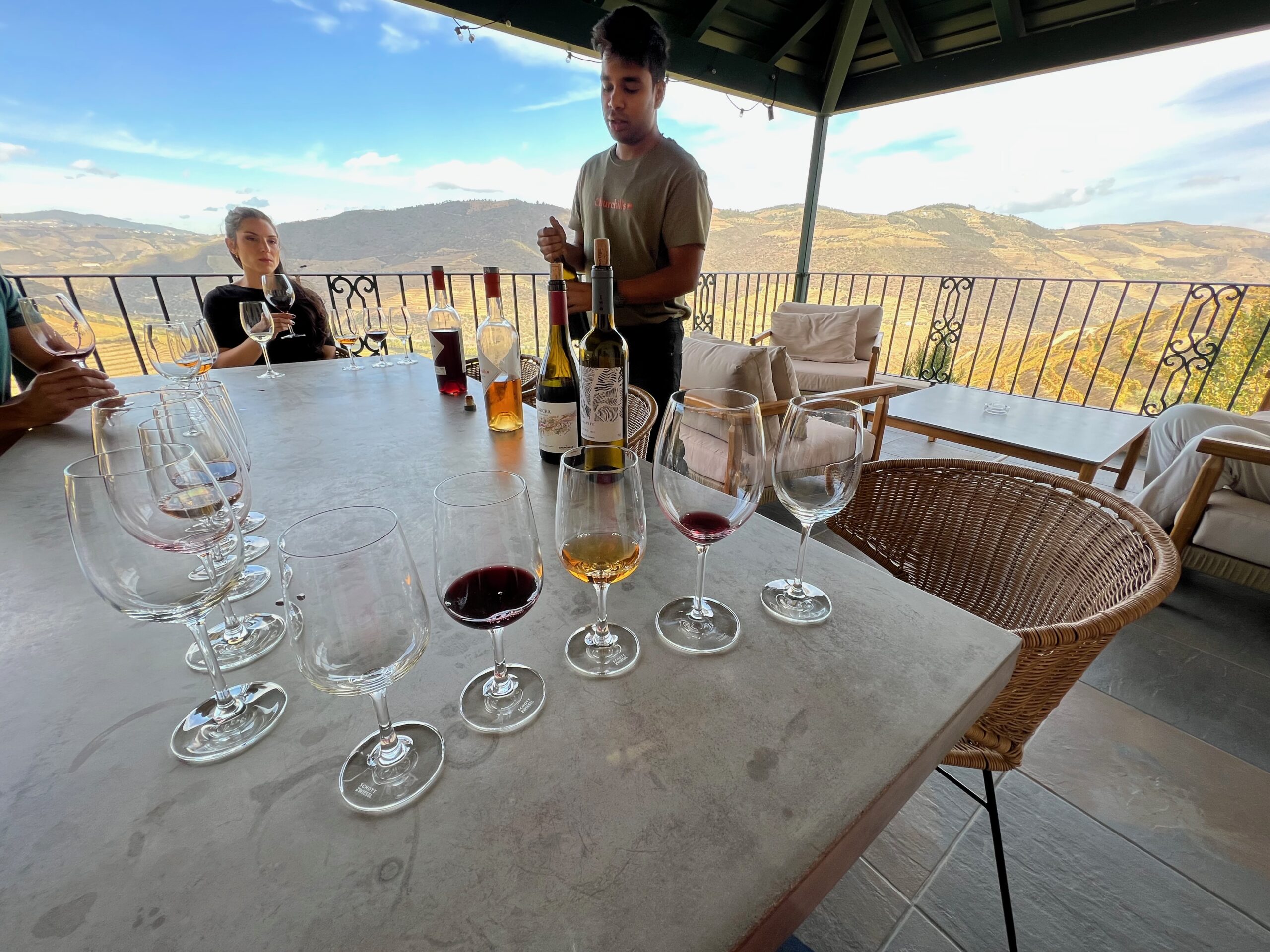
Next we traveled to Quinta da Ventozelo where we had a tasting menu lunch of local dishes on another porch overlooking their estate. It was a day filled with amazing views. We learned that the area we were touring has been designated as protected heritage by UNESCO, which means that many of these estates are not able to build mega-hotels for tourism. They are only allowed to renovate buildings that already exist on the estate in the same volume as those buildings existed before. Many estates are building small guest-houses and restaurants to accommodate visitors. In fact, we learned that wine tasting is not actually common in the region until only recently. Most places are only open to private or semi-private bookings and many are on winding roads that are not navigable by larger vehicles!
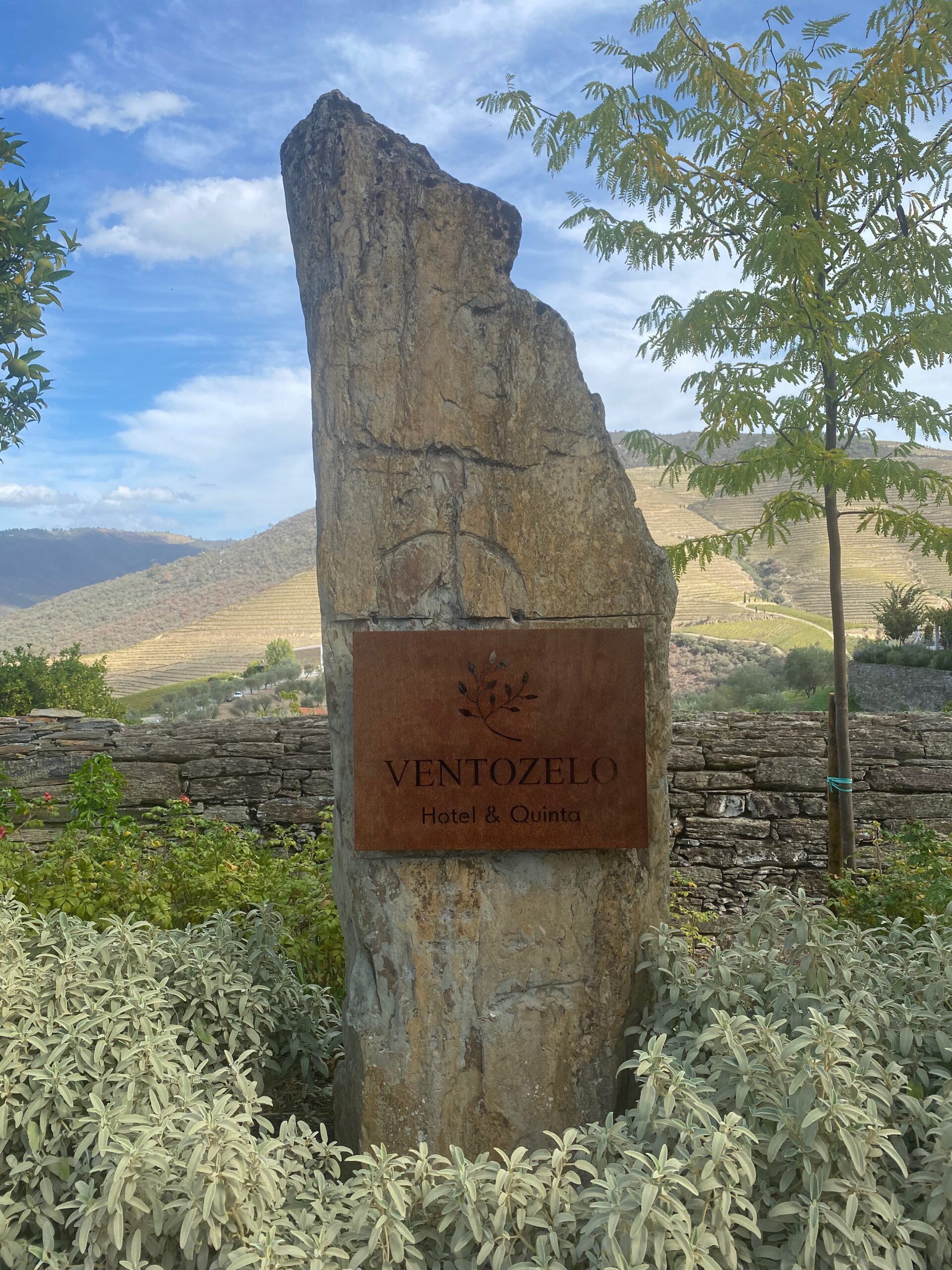


For the afternoon, we first went to Quinta dos Frades, which was originally established by monks who were the first makers of wine from the estate. On their property, they actually have a marker that officially denotes them as one of the best wine estates in the region in terms of the quality of their wine. On the half of the estate where their reserve wine comes from, some of the vines were over 150 years old.
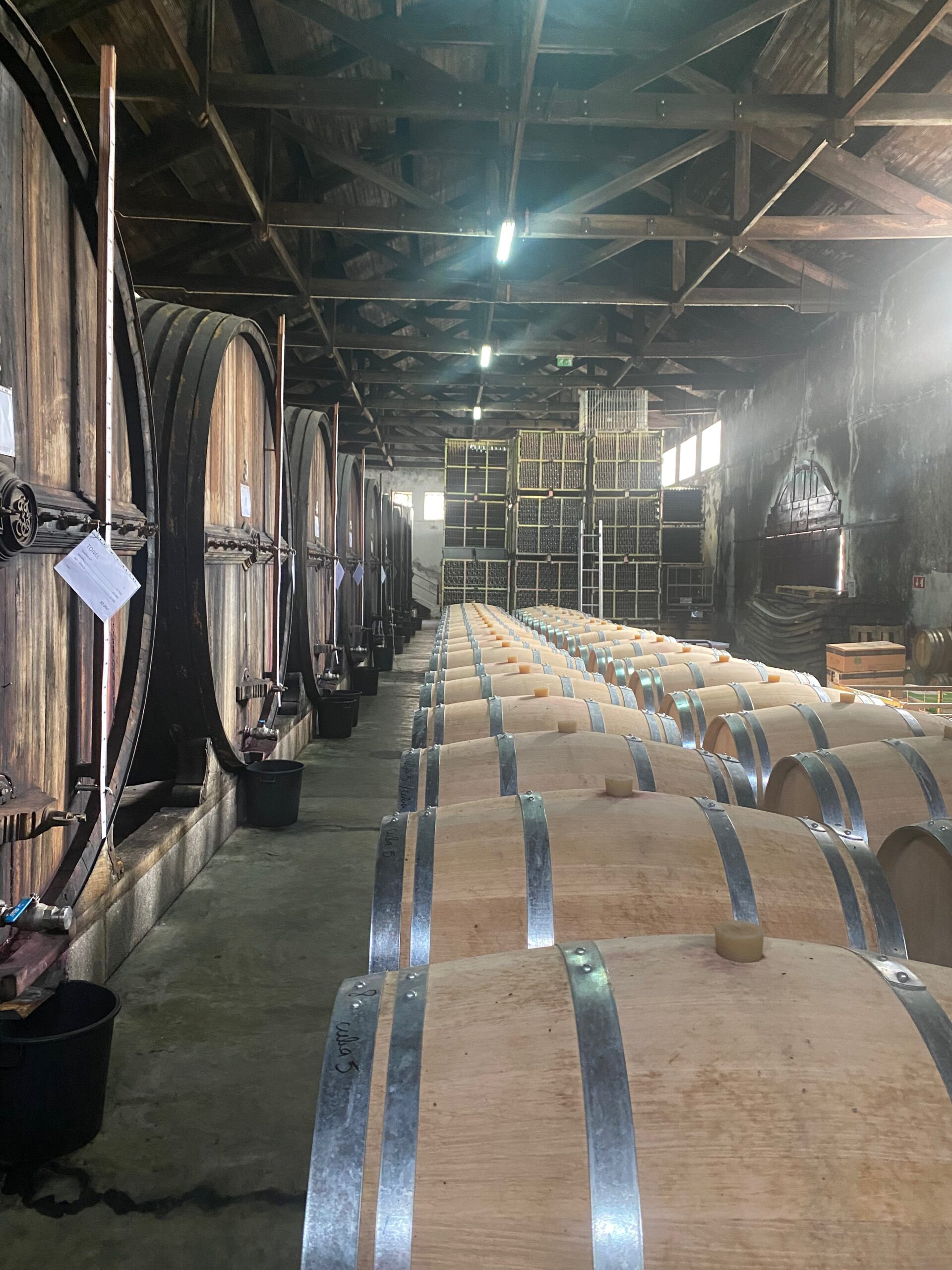

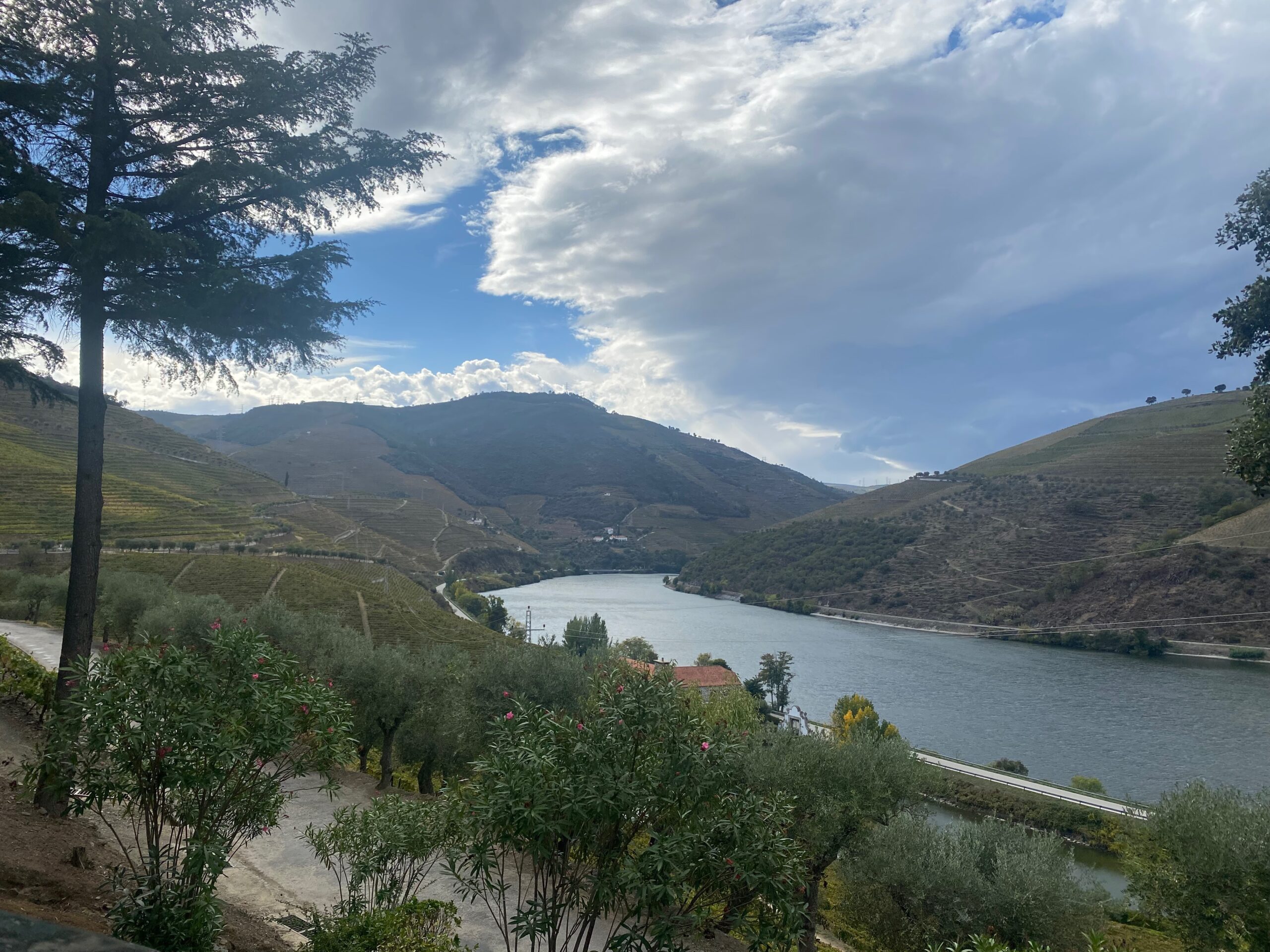
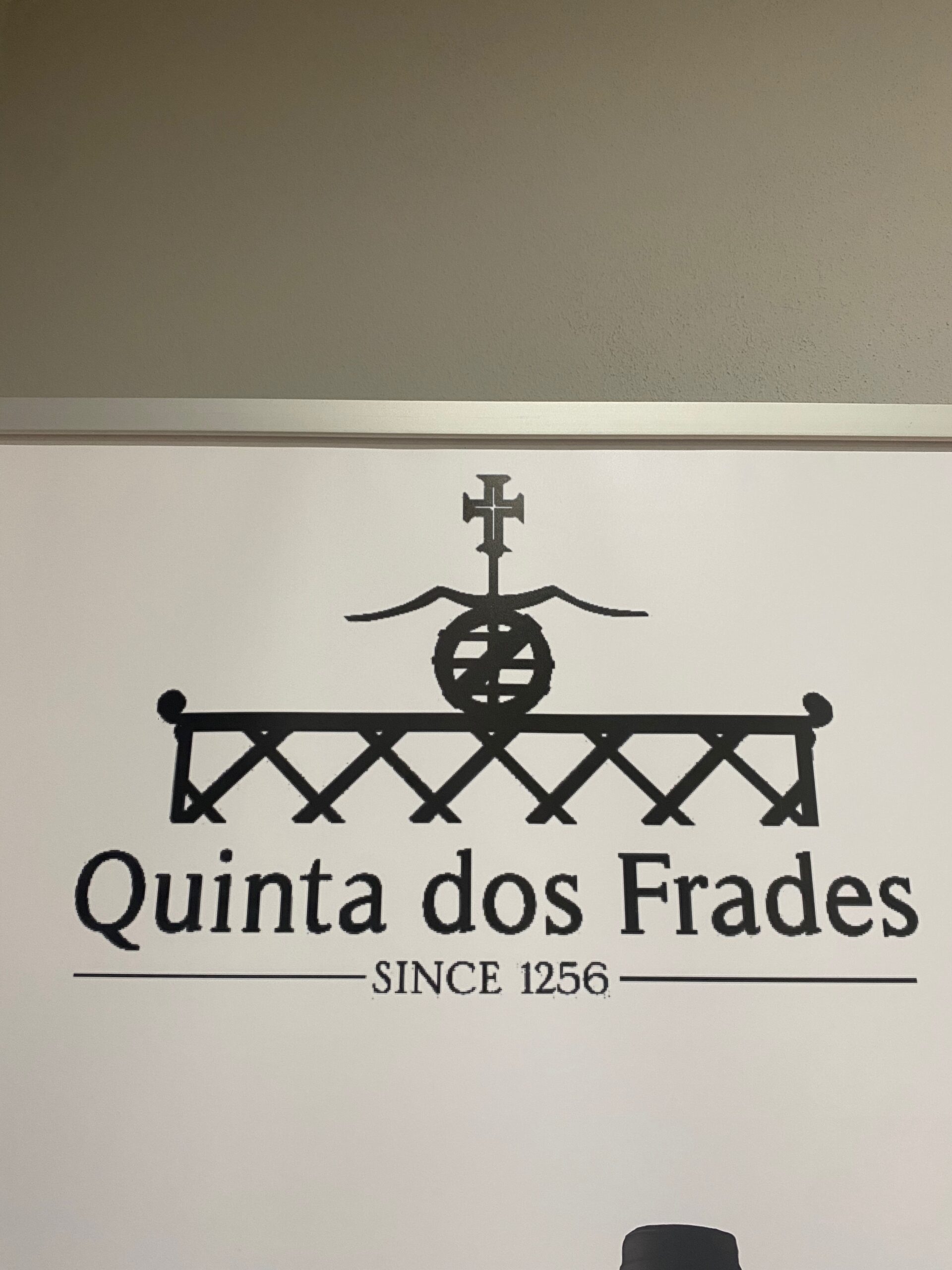
At the last winery, Quinta do Panascal, we drank a flight of ports to close out the day. We also learned that our group tour booked for the next day was being cancelled, but luckily our amazing guide was able to work out his schedule to return the following day for another private tour.


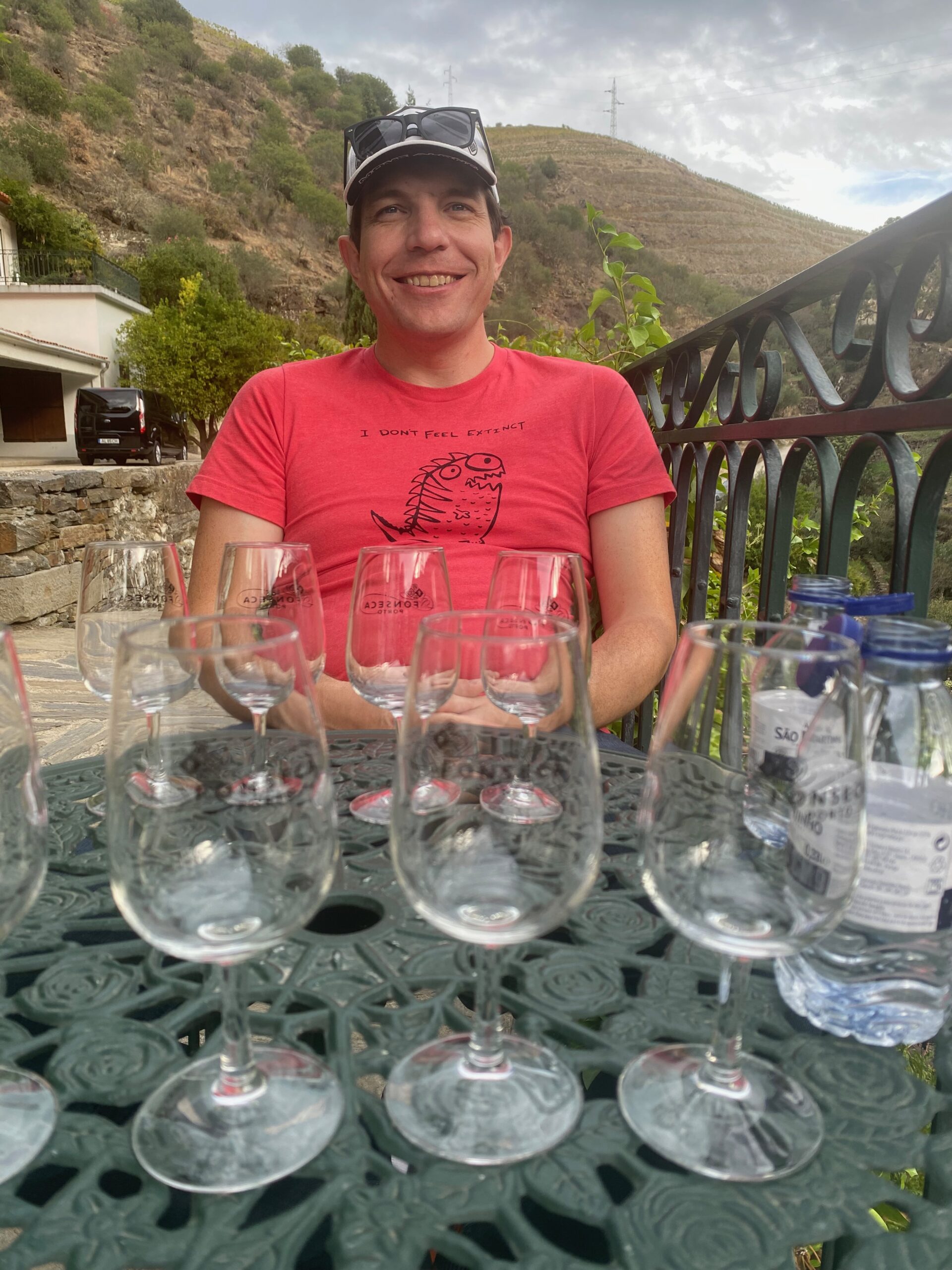
The next morning, the weather was not as good, but we met up with Francisco for another day of sampling amazing wines. We started out with Quinta d0s Murcas. They are one of the few wineries in the region to obtain an official organic certification, and also foot stomp all their wine. They are also unique in that their various wines are all localized from particular areas of their estate, each having their own amounts of sun exposure and altitude depending on the location within the estate. This made for a really interesting tasting flight.
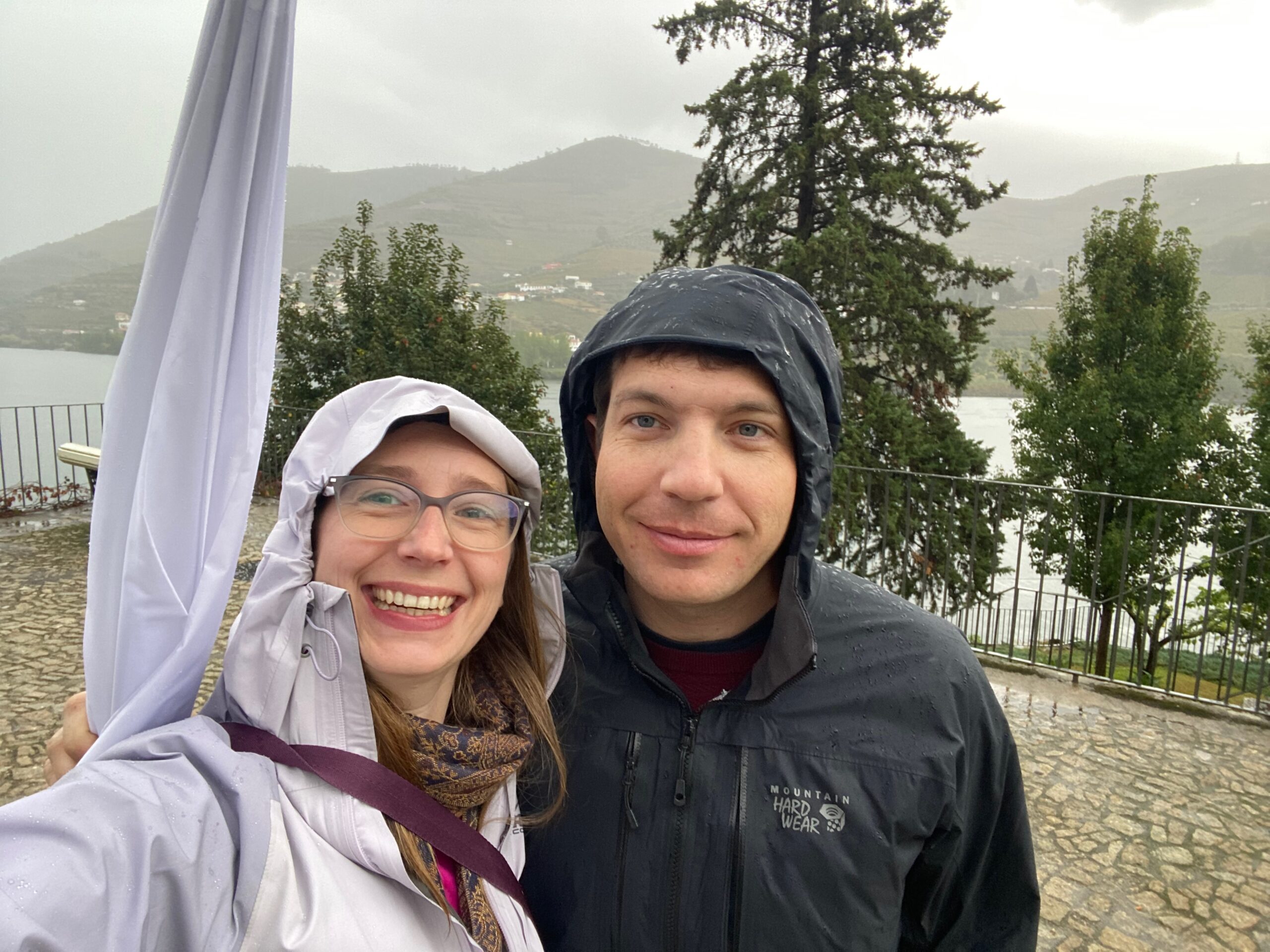
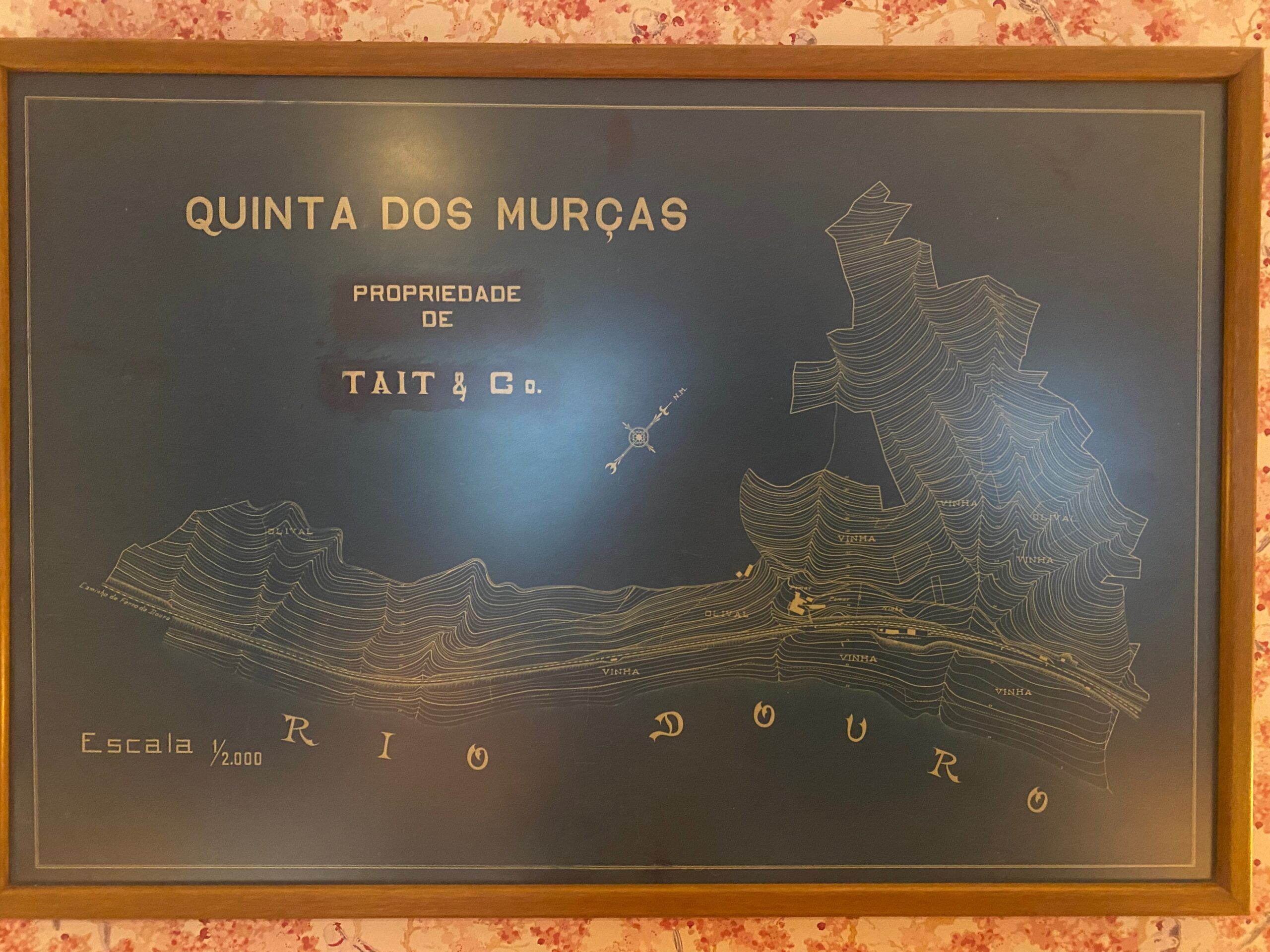
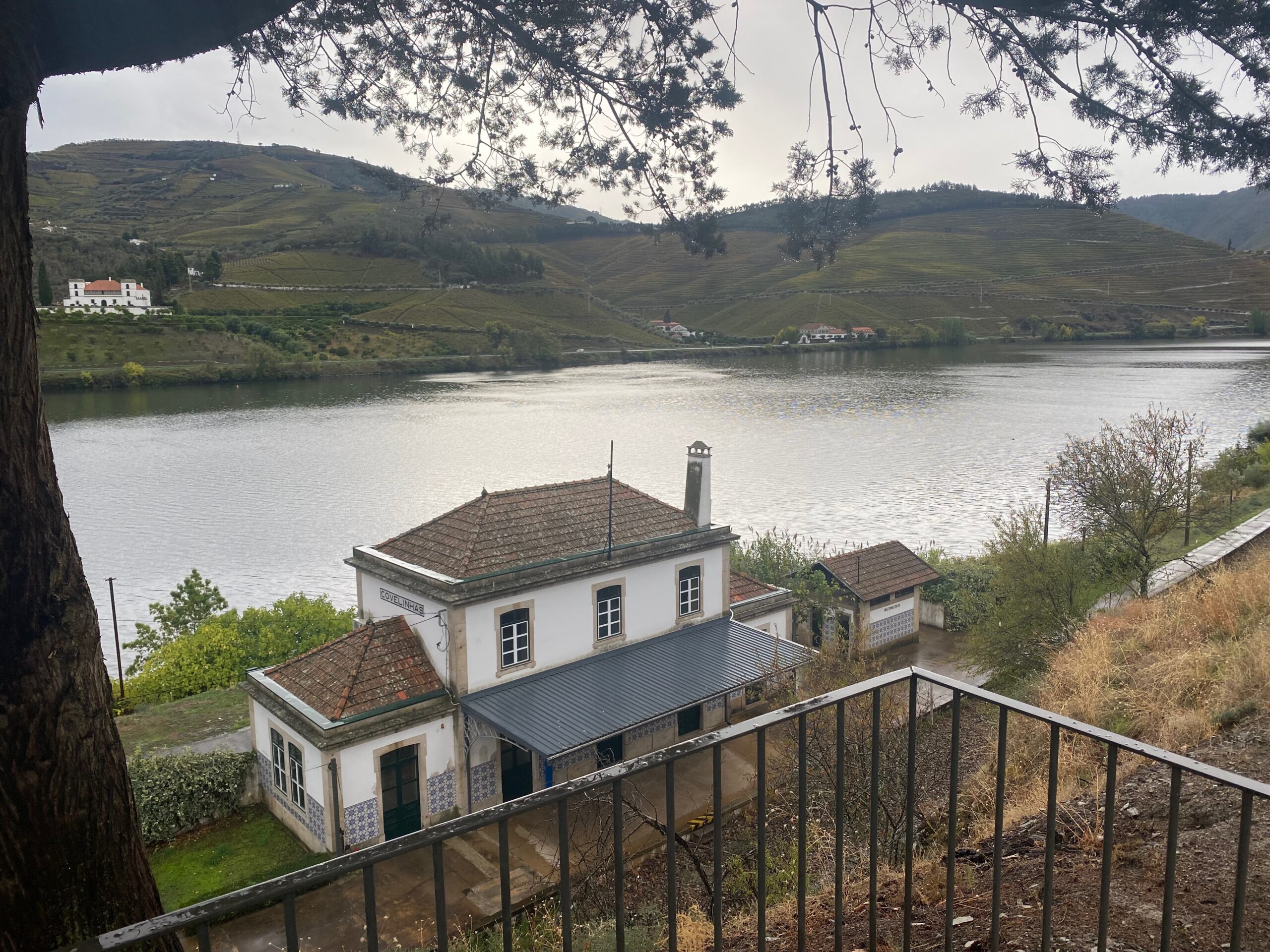
Next up, we stopped for lunch in the town of Pinhao at a restaurant attached to a winery where we had wine parings along with all of our courses.
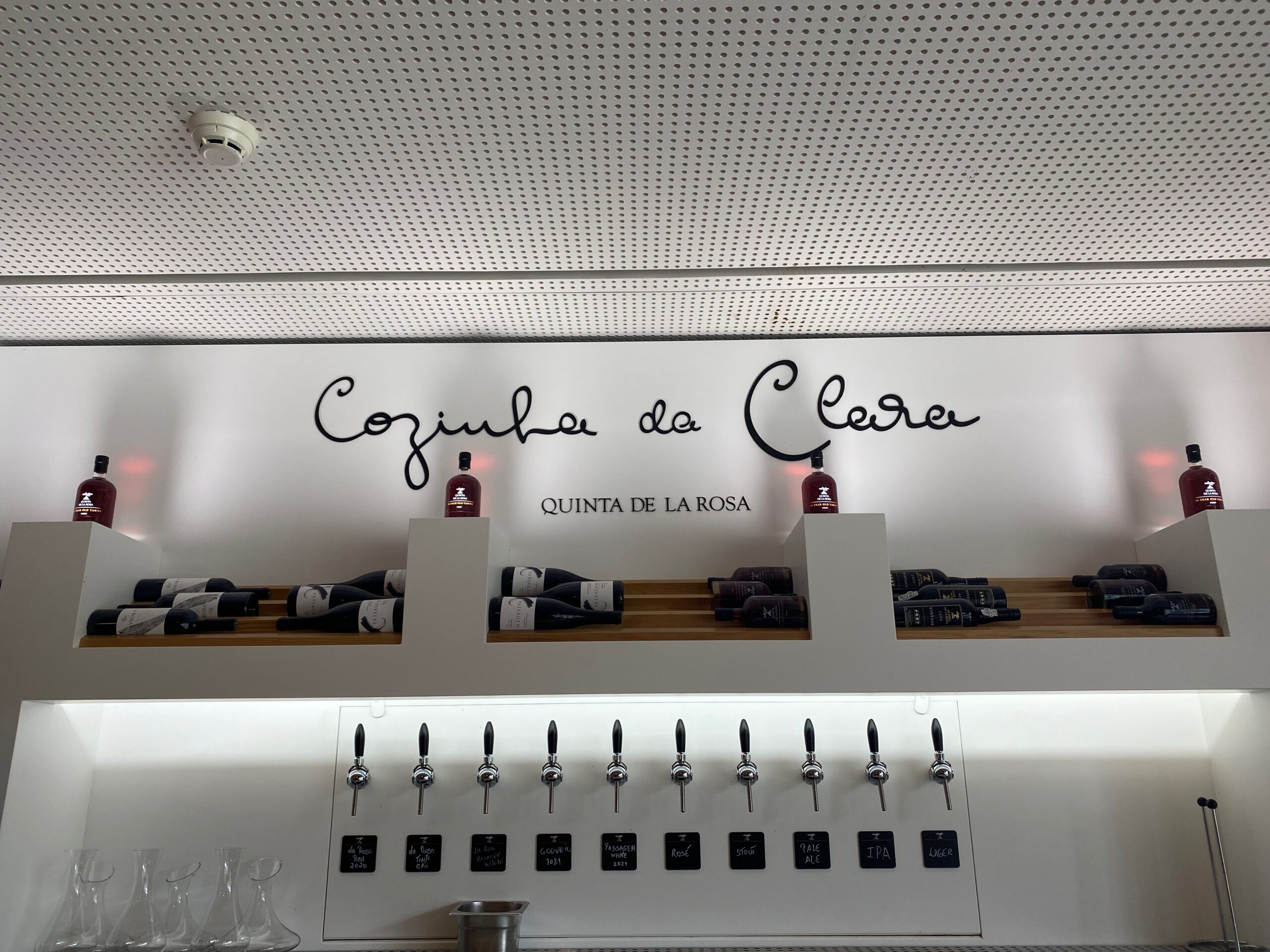
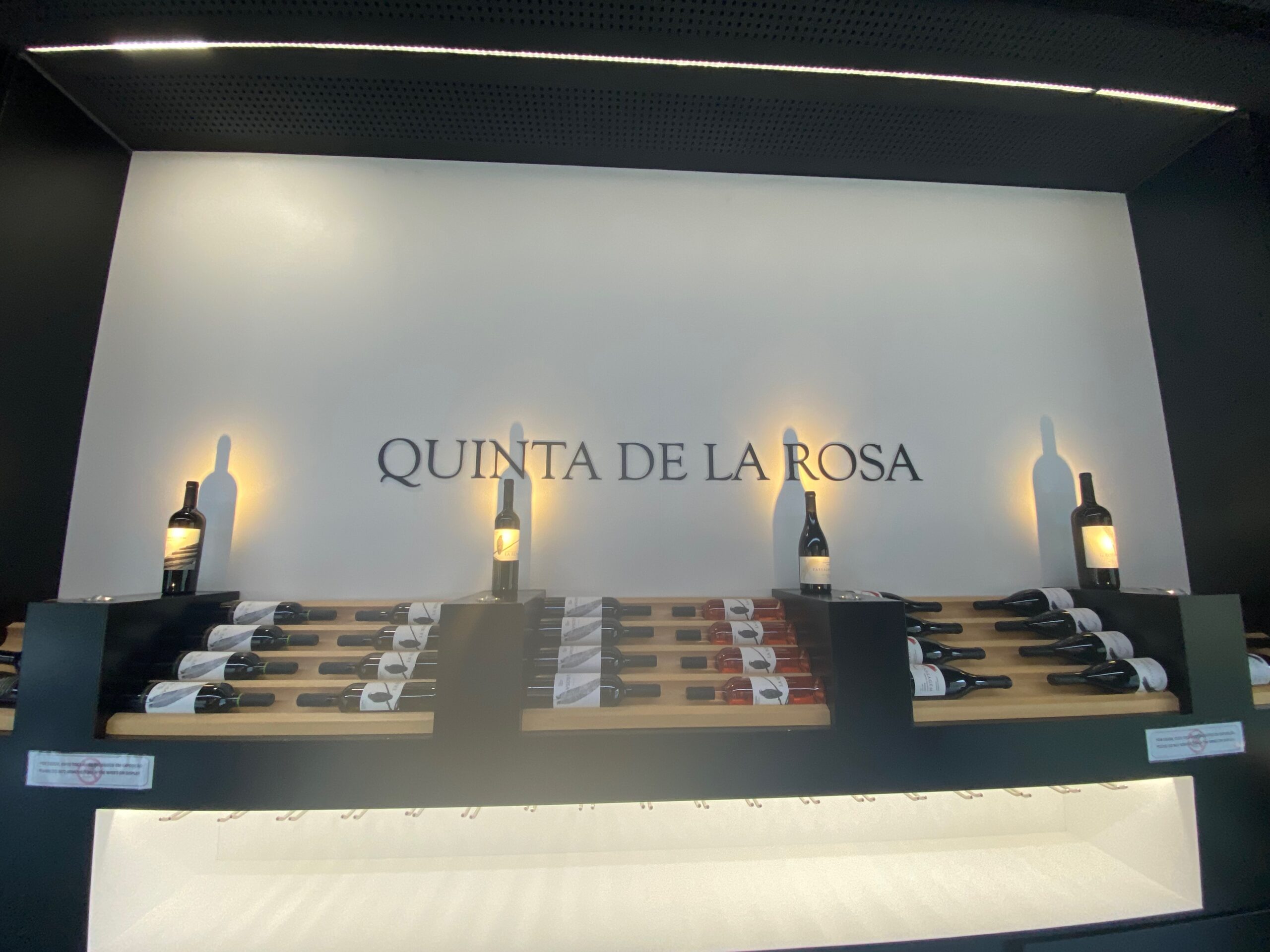
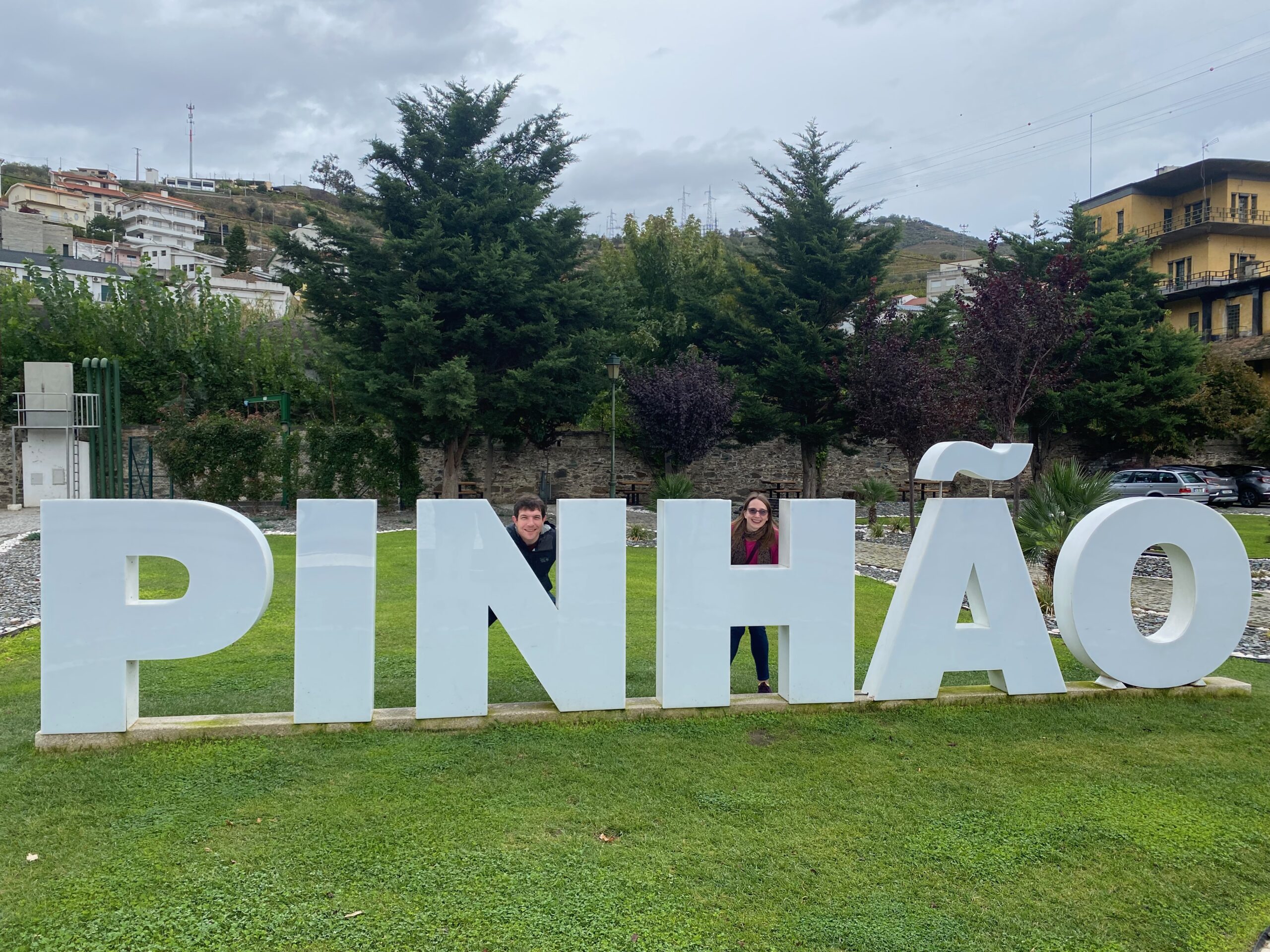
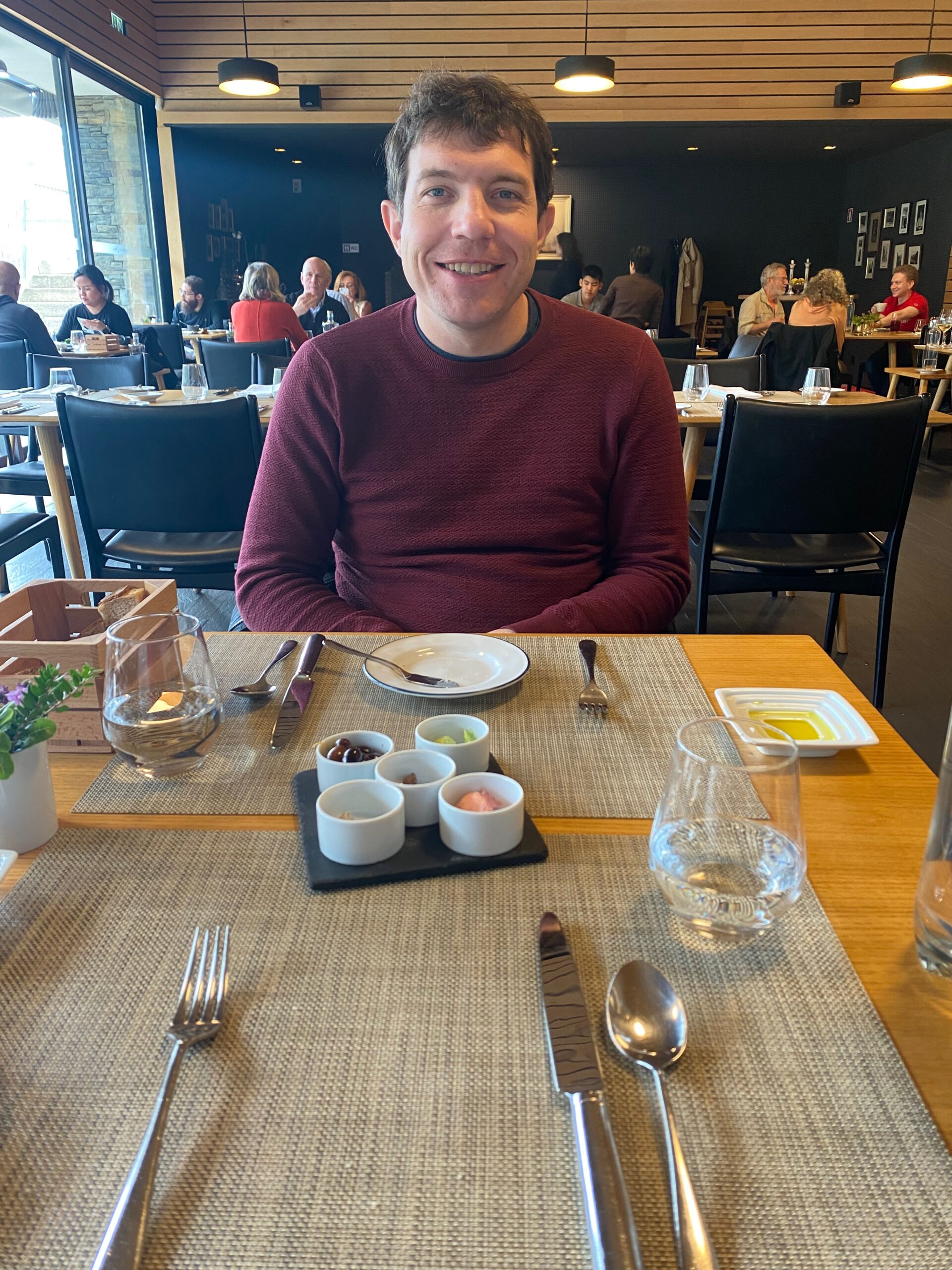
After lunch, we stopped at a Quinta whose winemaker was a good friend of Francisco. She had only just become their wine maker last year, so the wines that we sampled were actually from the previous wine maker, and due to being under new ownership, they were changing all their methods – so clearly we’ll have to go back in a few years to try some of her wines!
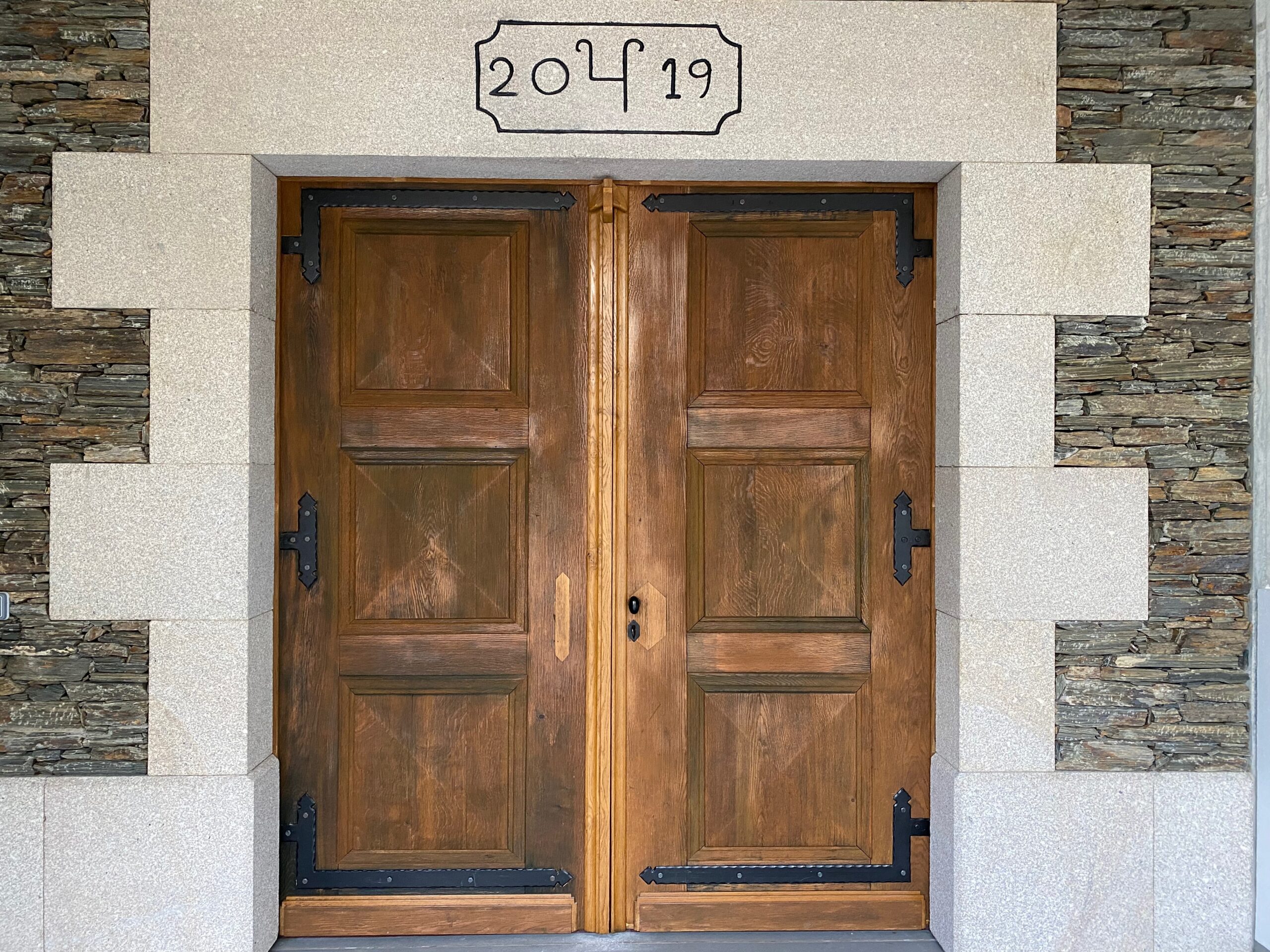
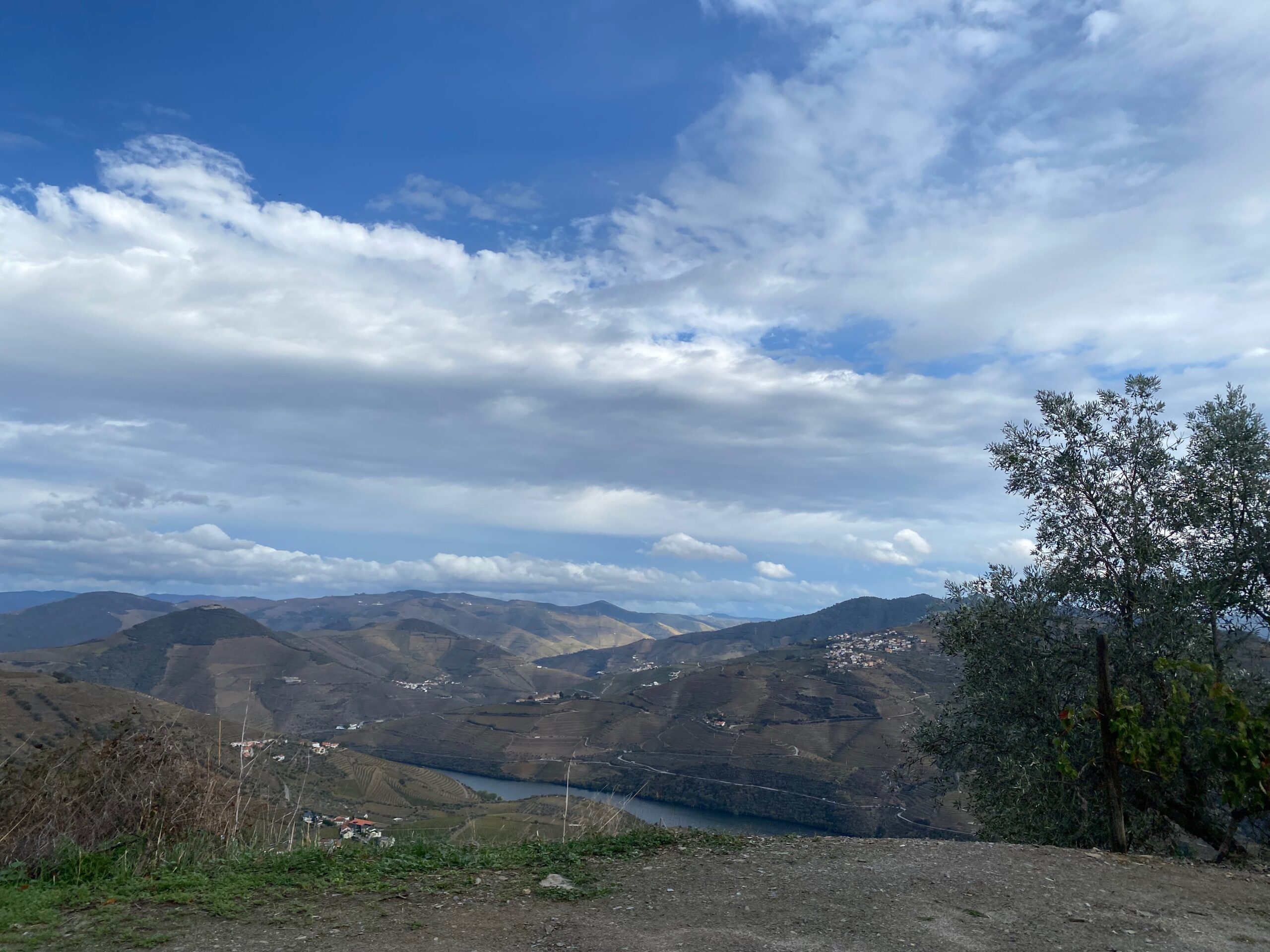
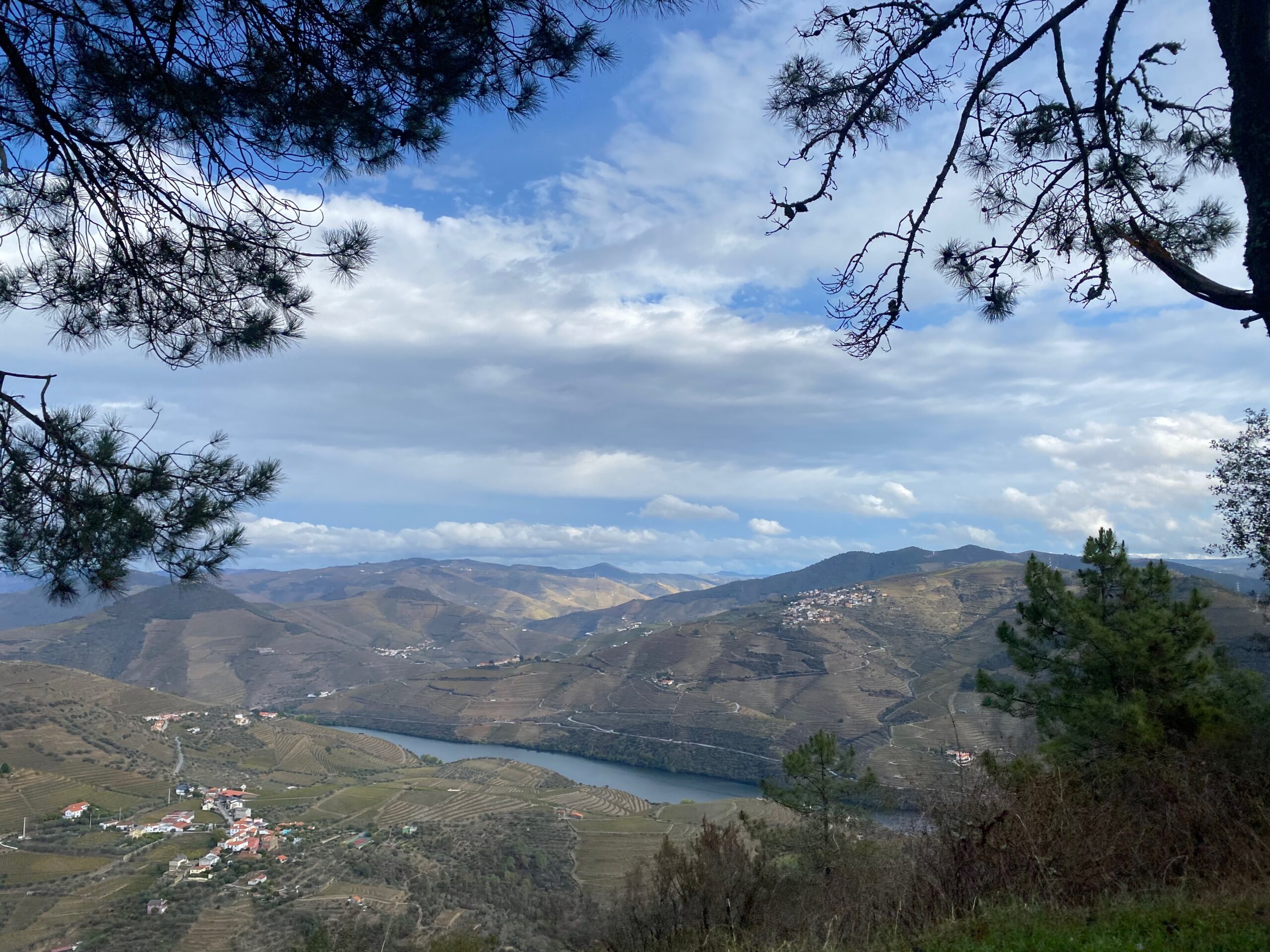
By the afternoon, the weather had cleared up and our last stop was Quinta da Gaviosa, one of the estates under the wine brand Alves de Sousa.
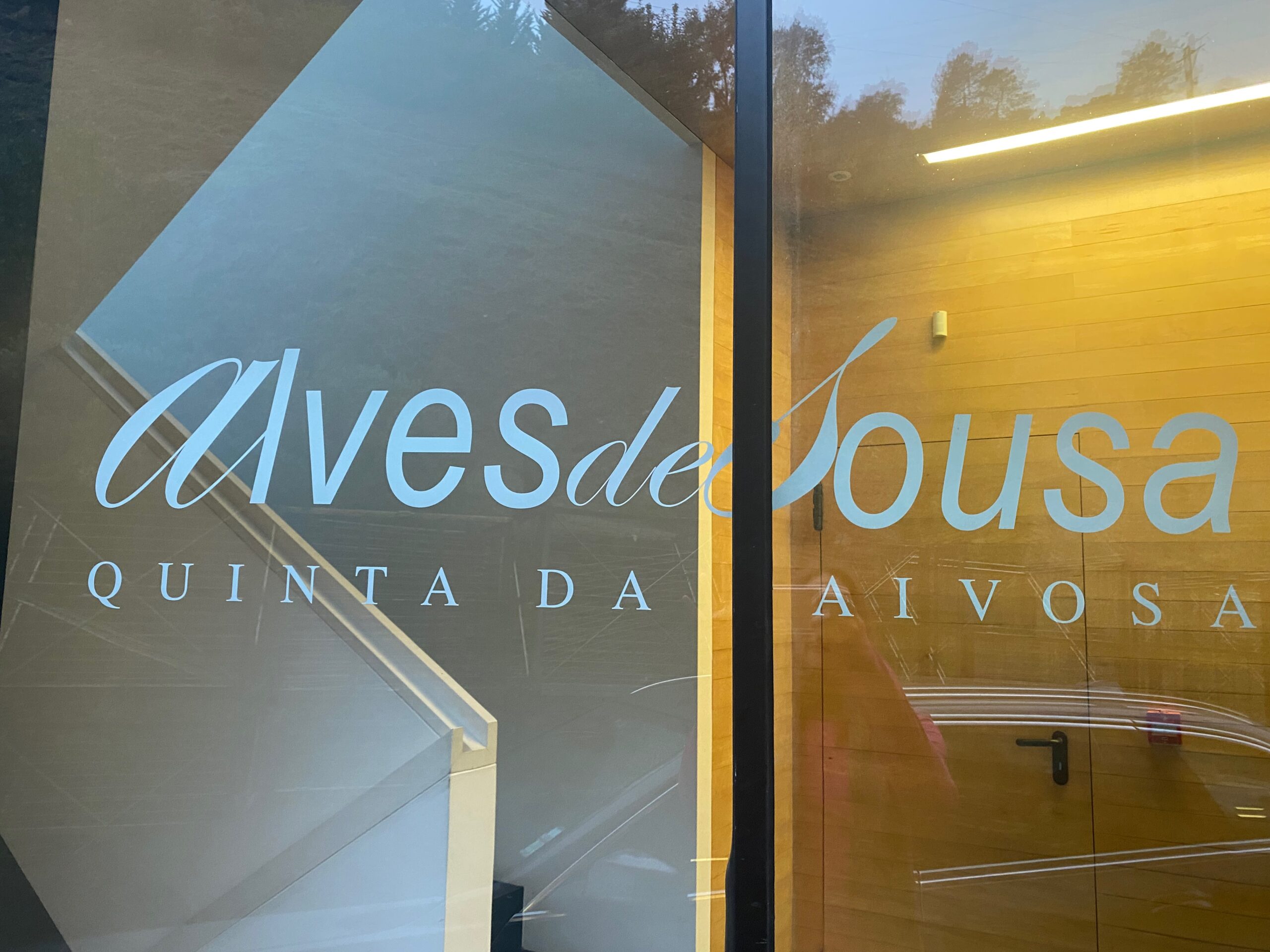
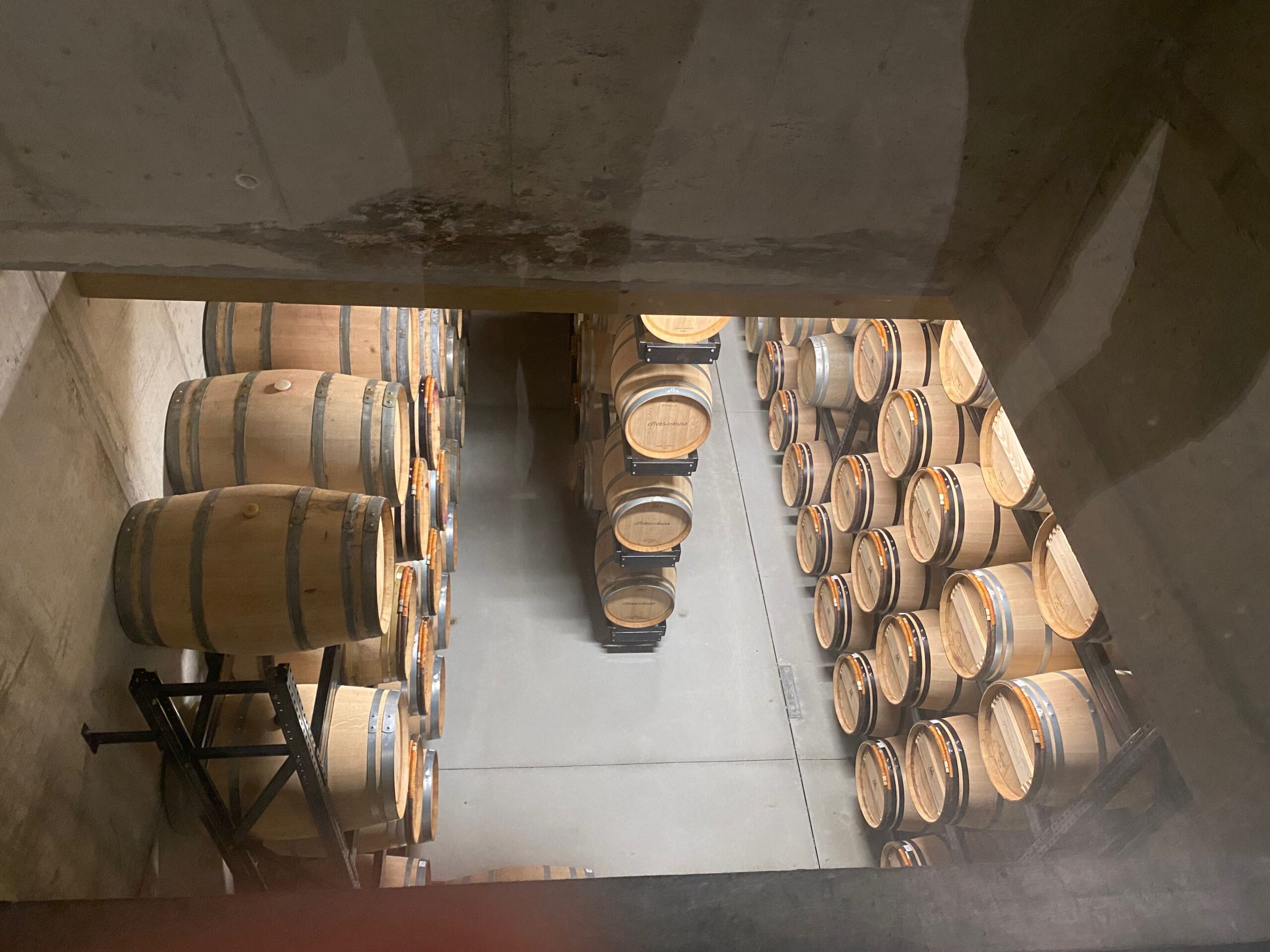
The Douro Valley was unbelievably beautiful, and everyone we met with was extremely friendly. The wines were so unbelievably affordable that we ended up with 3 cases of wine that we somehow have to get back to the United States!
